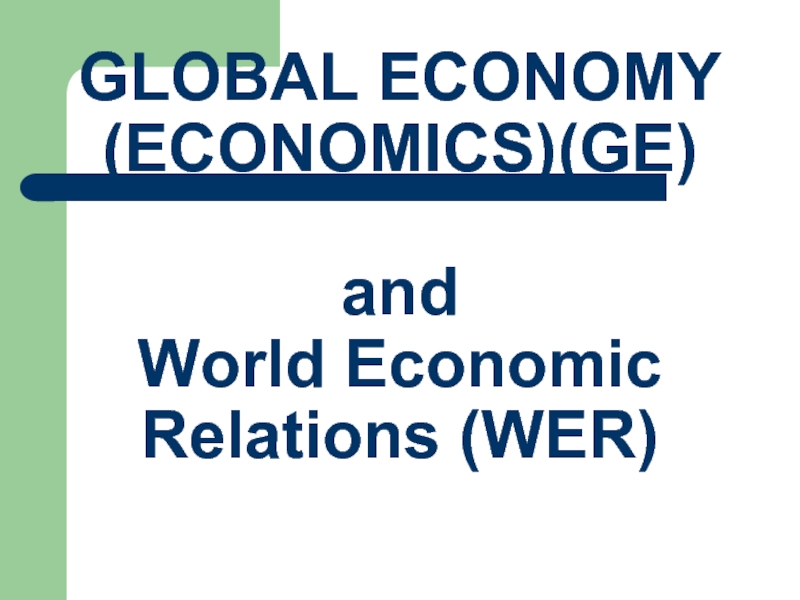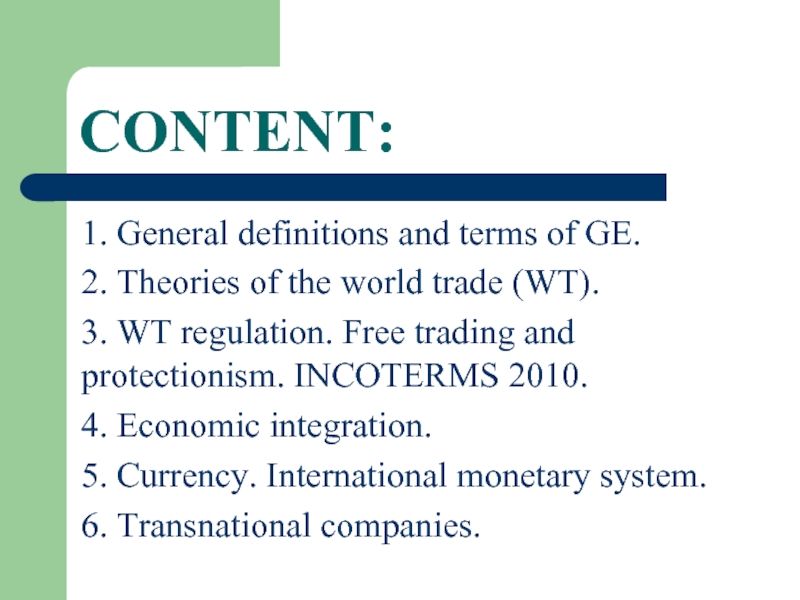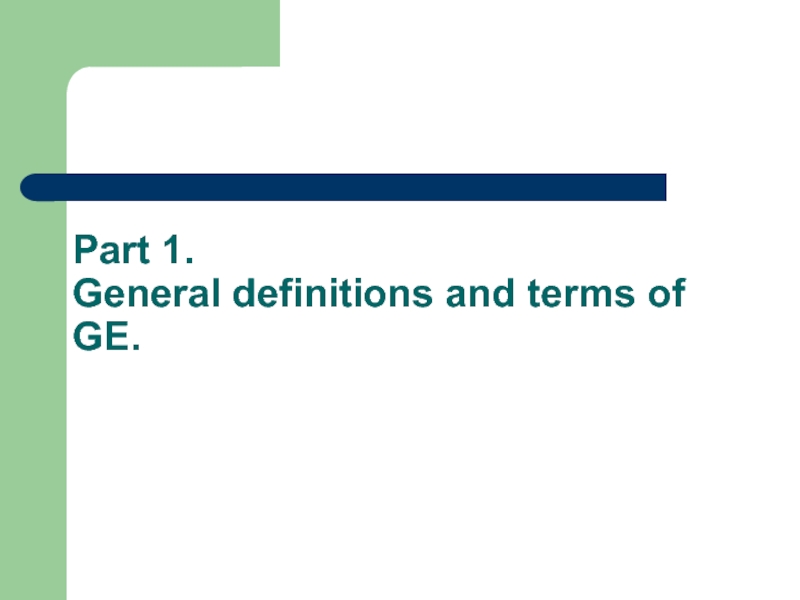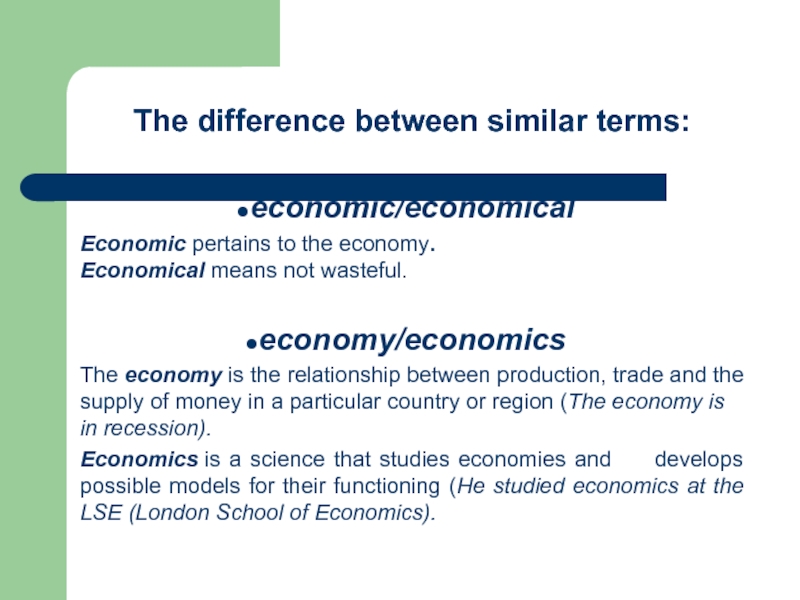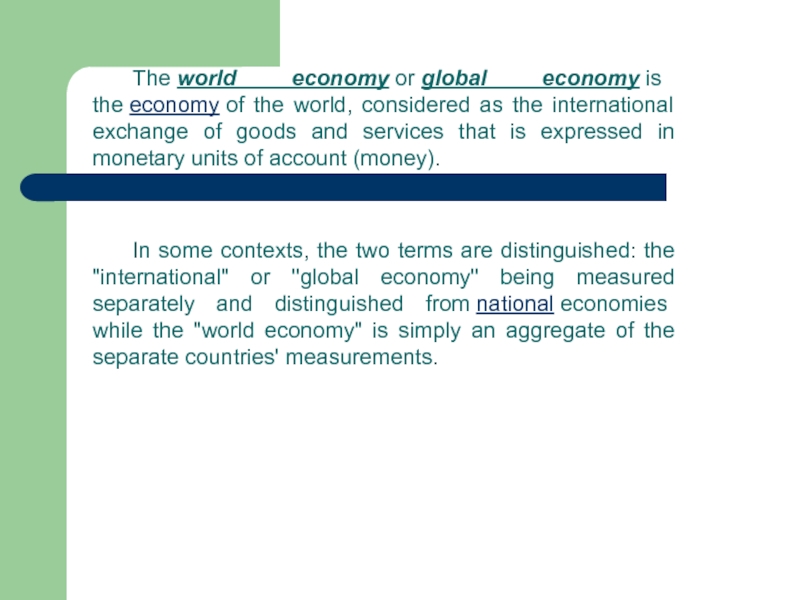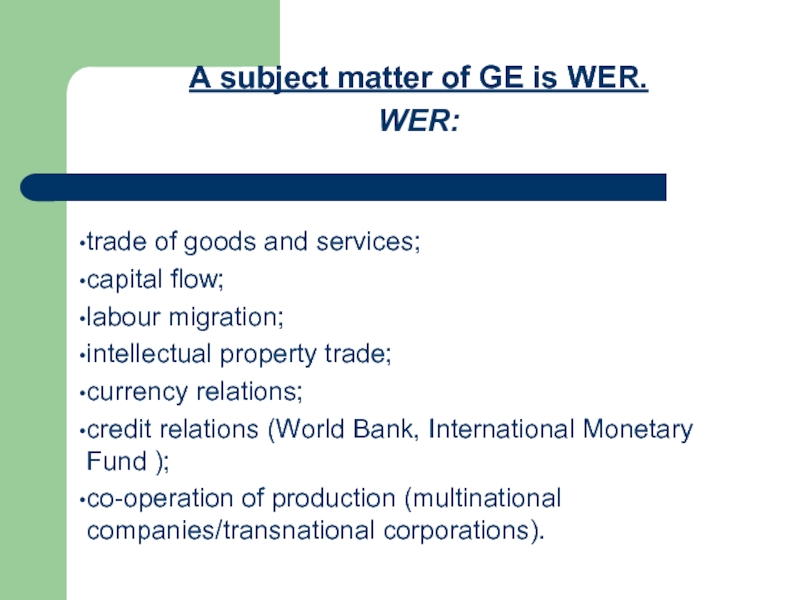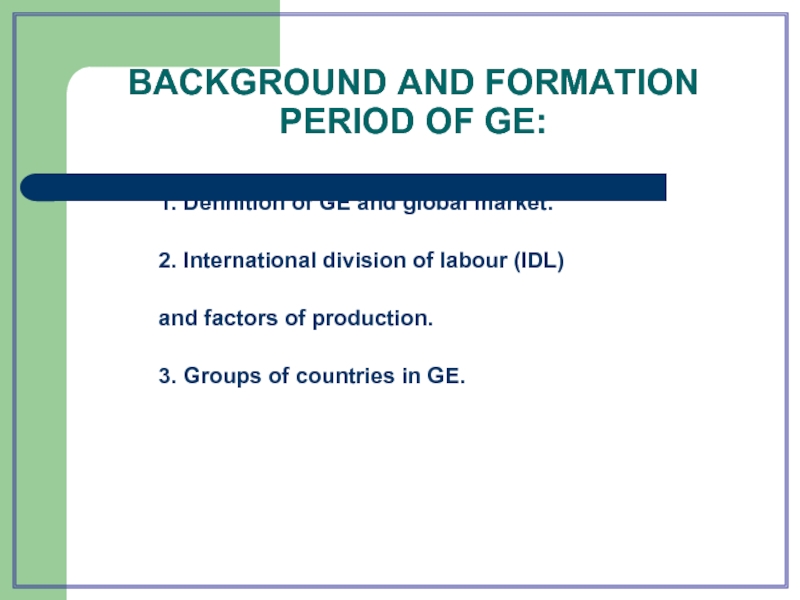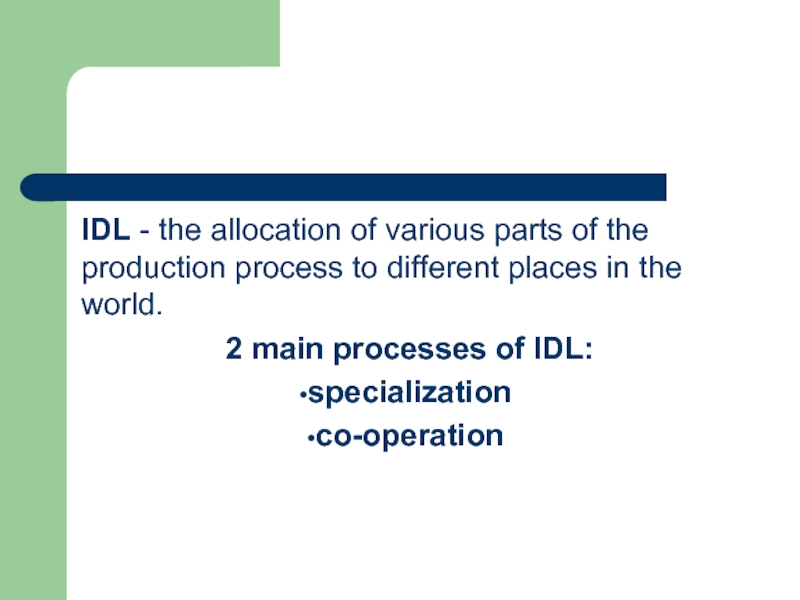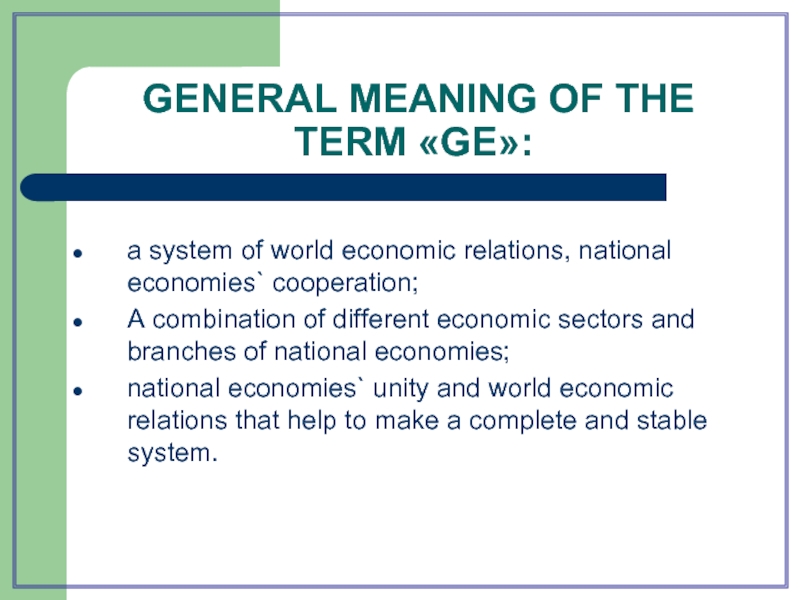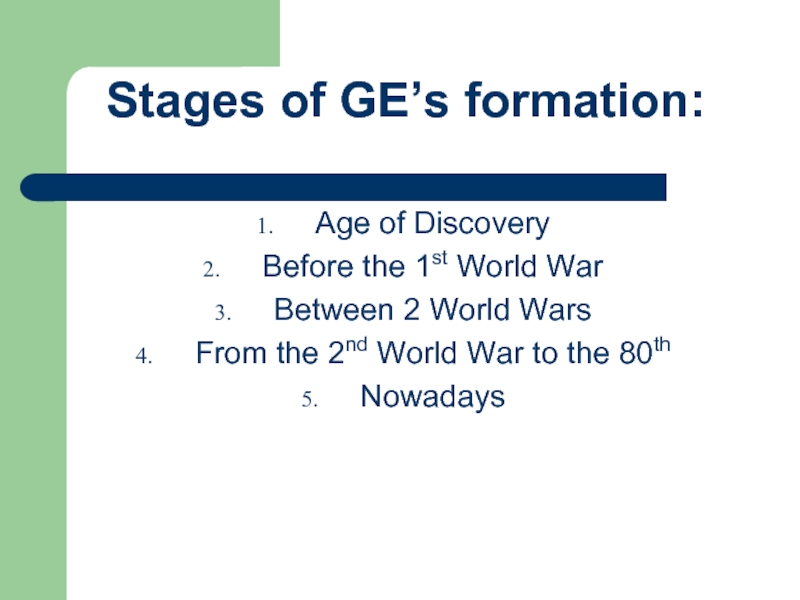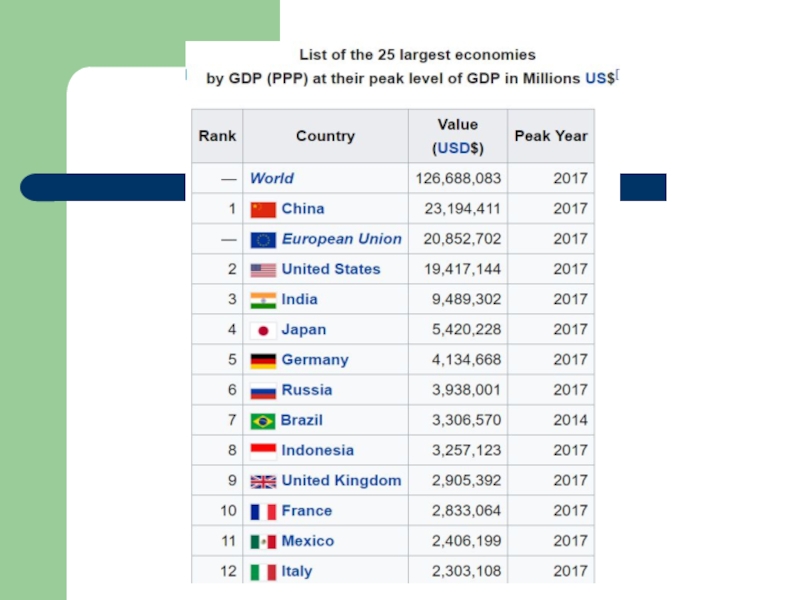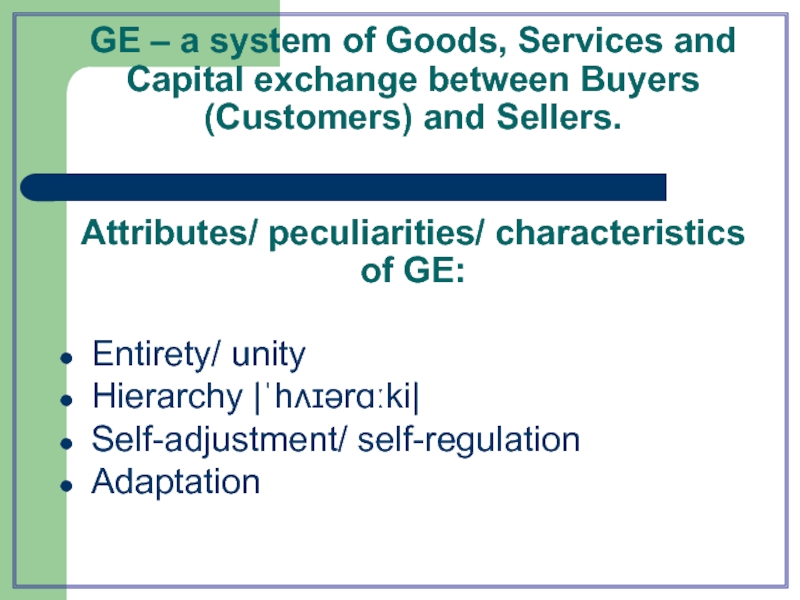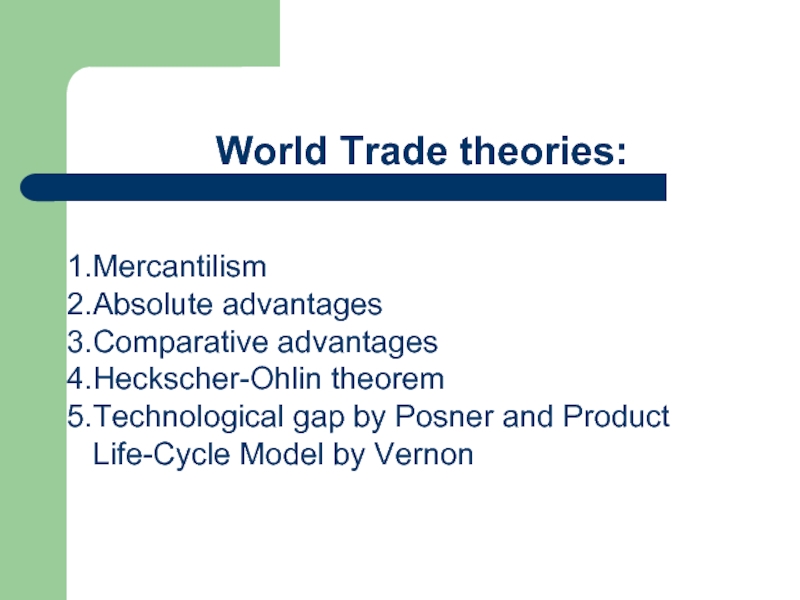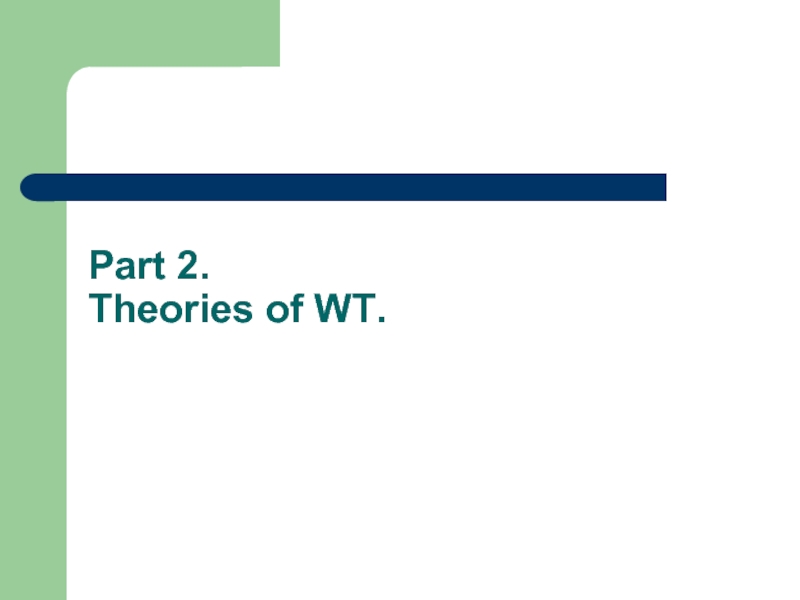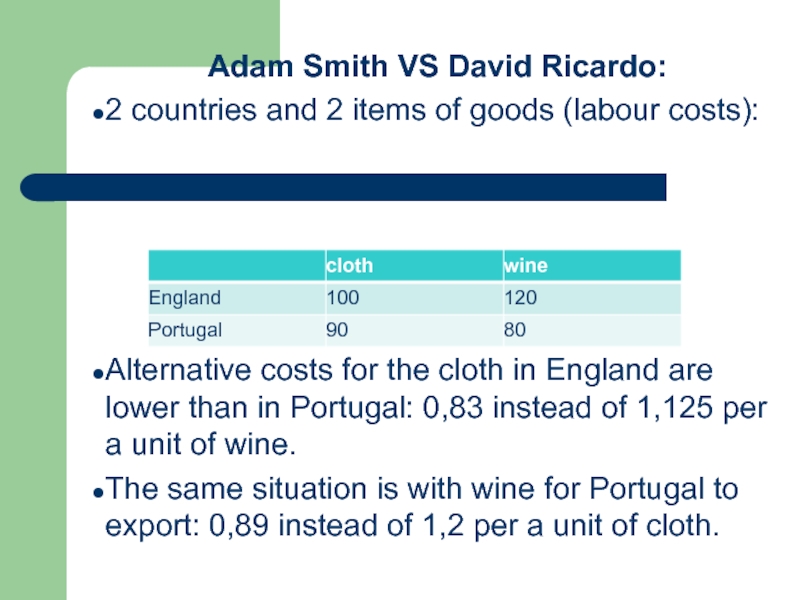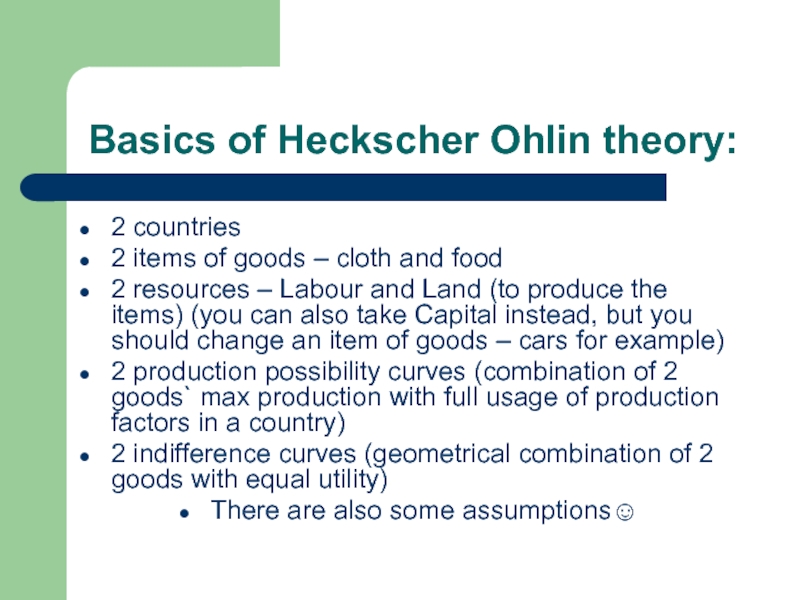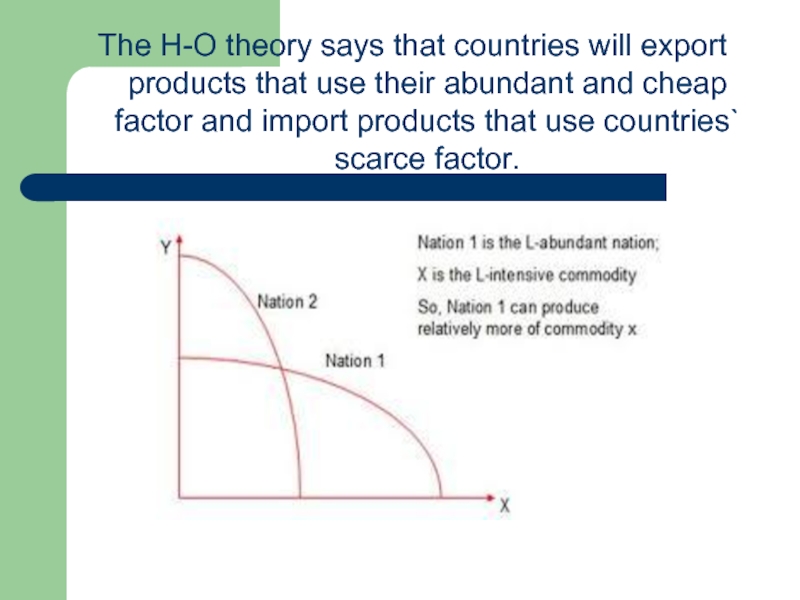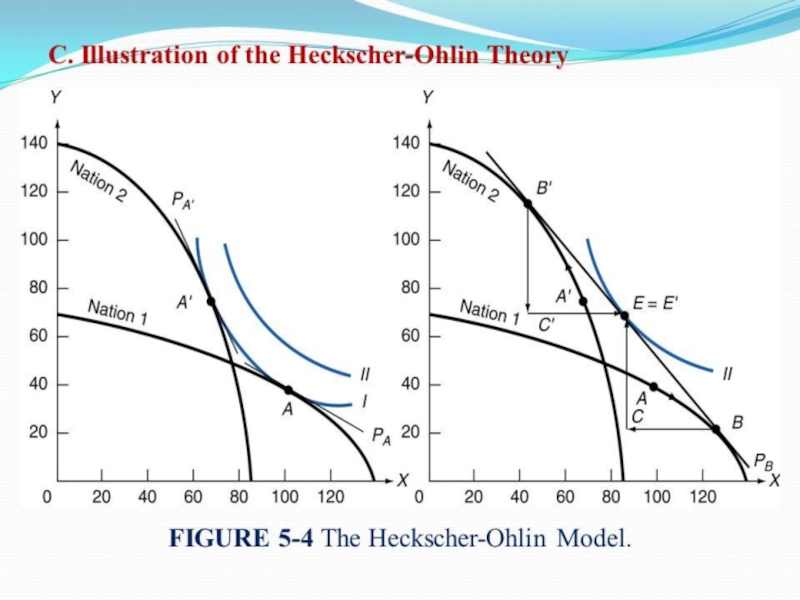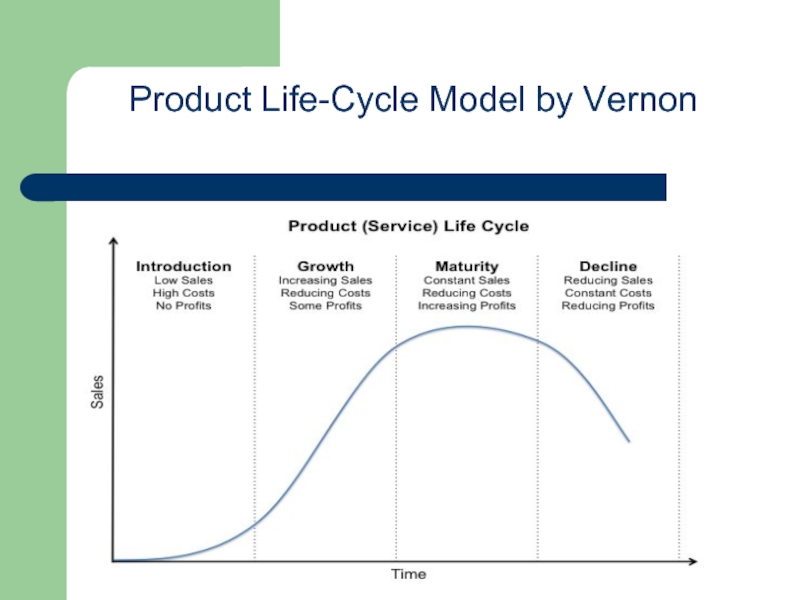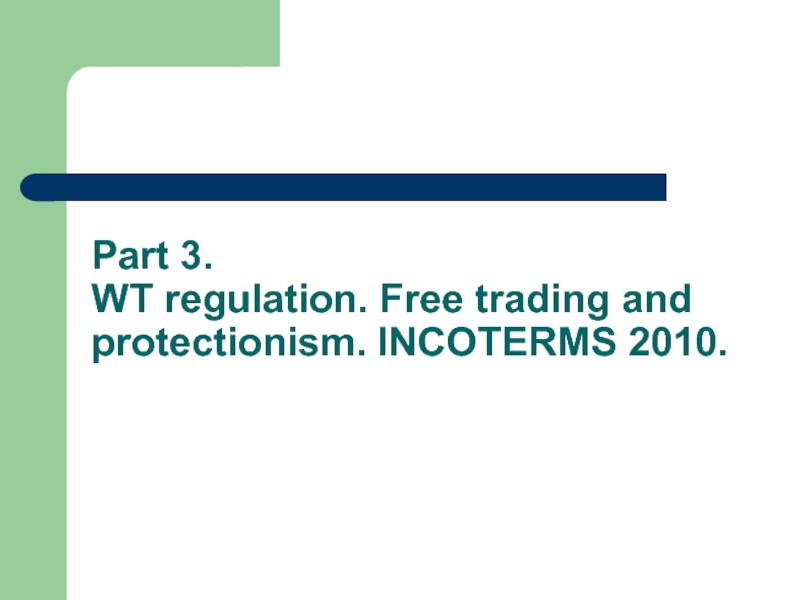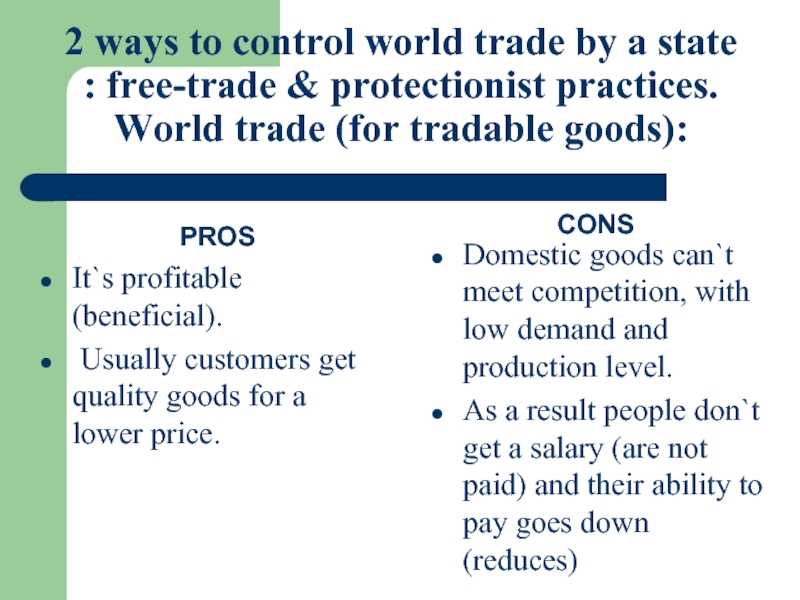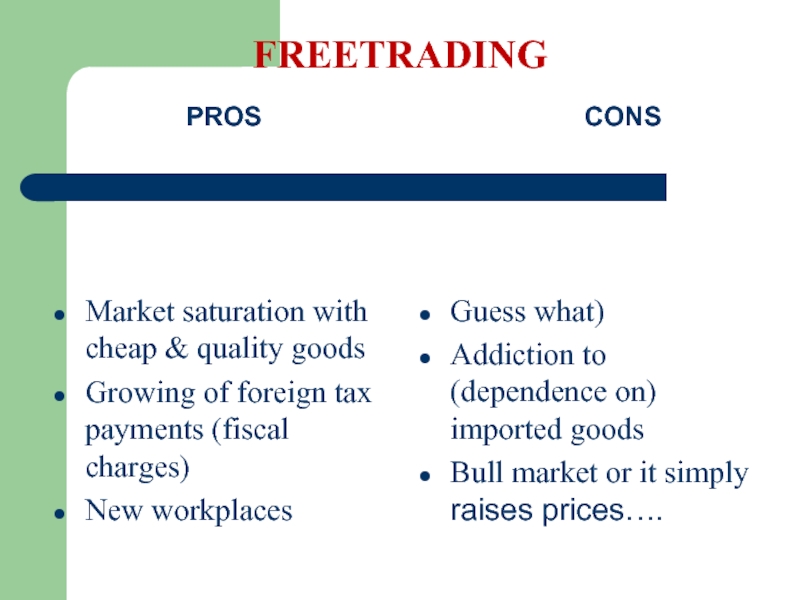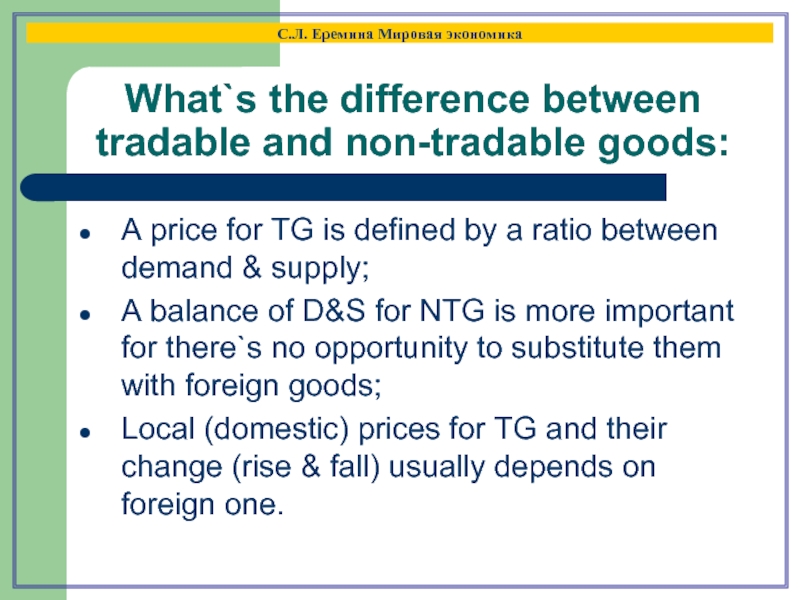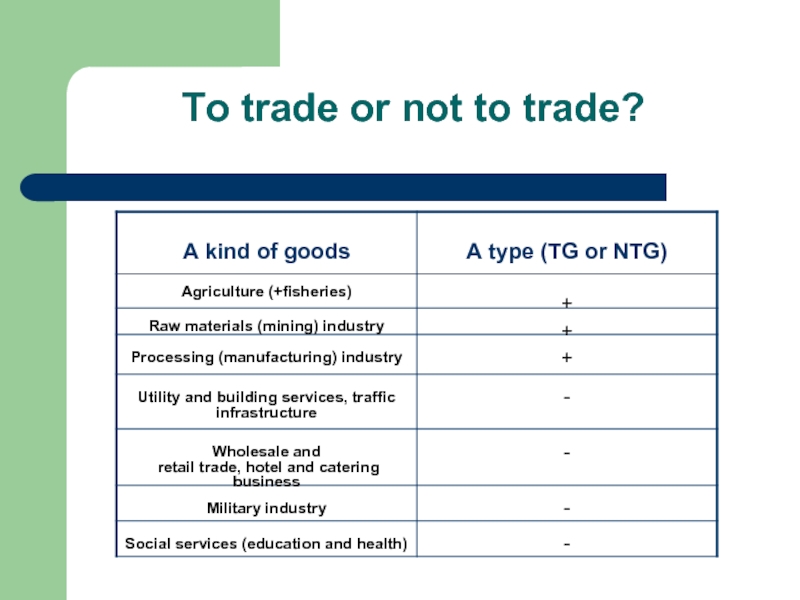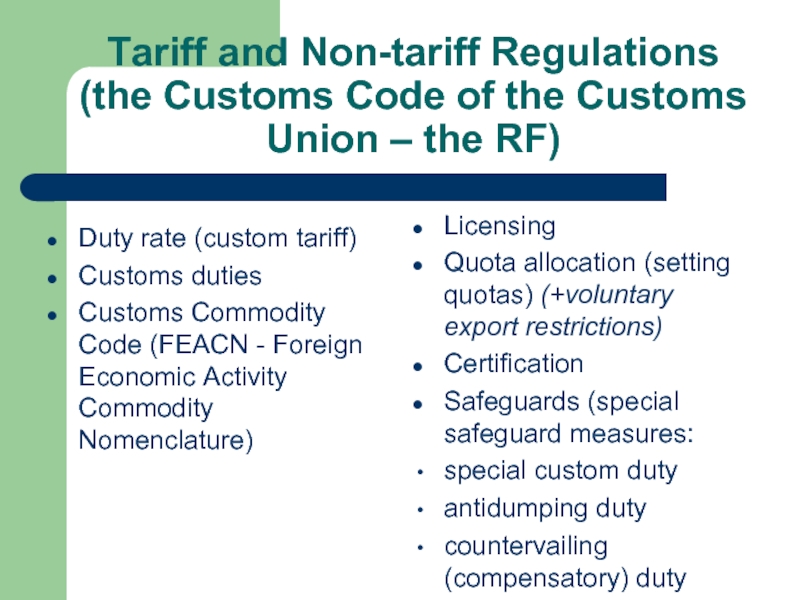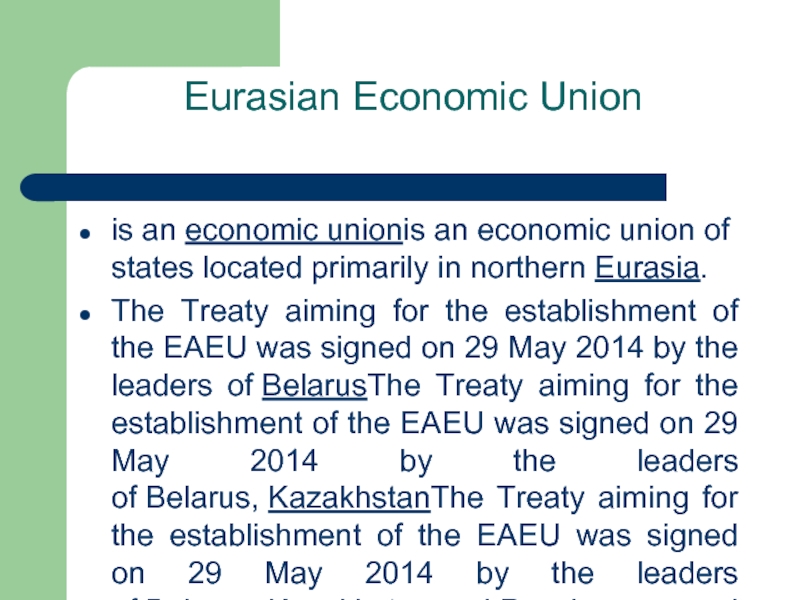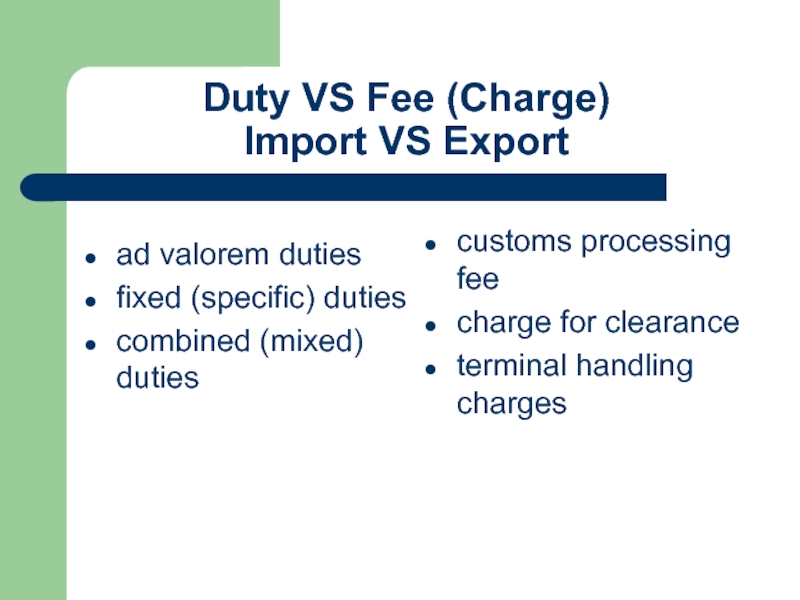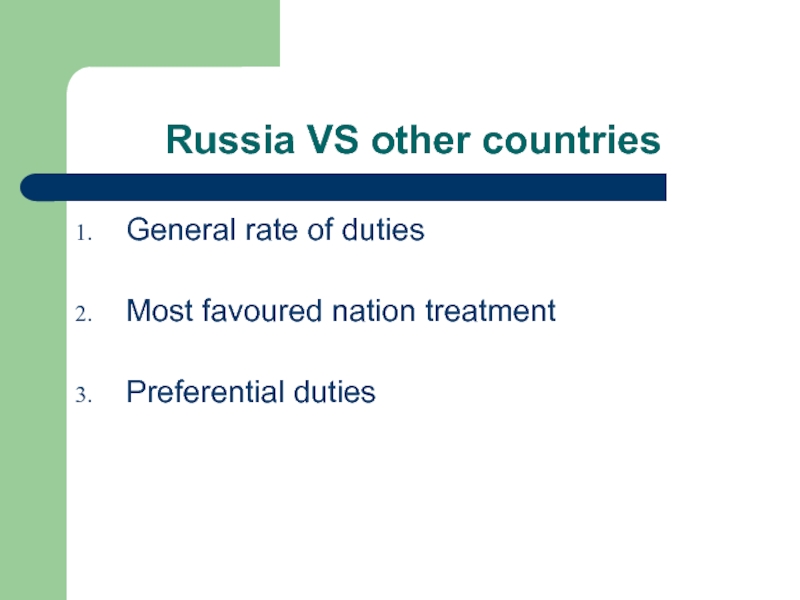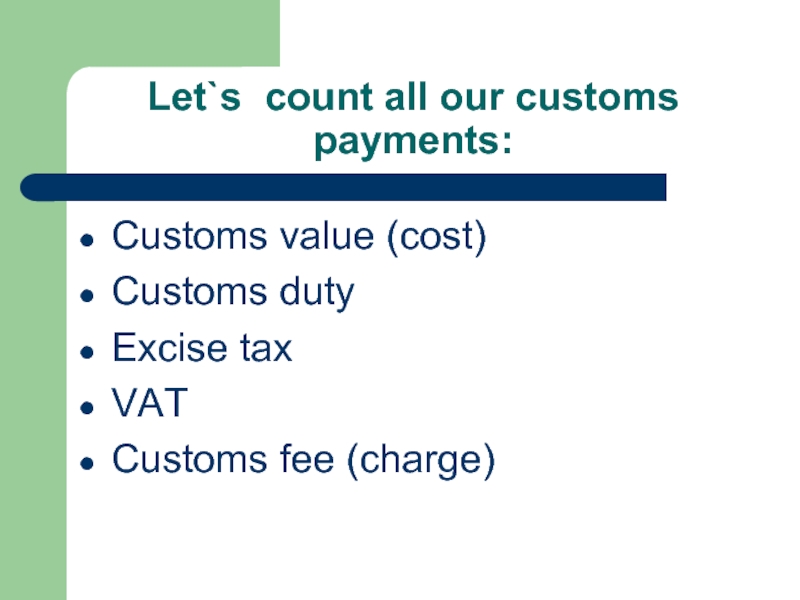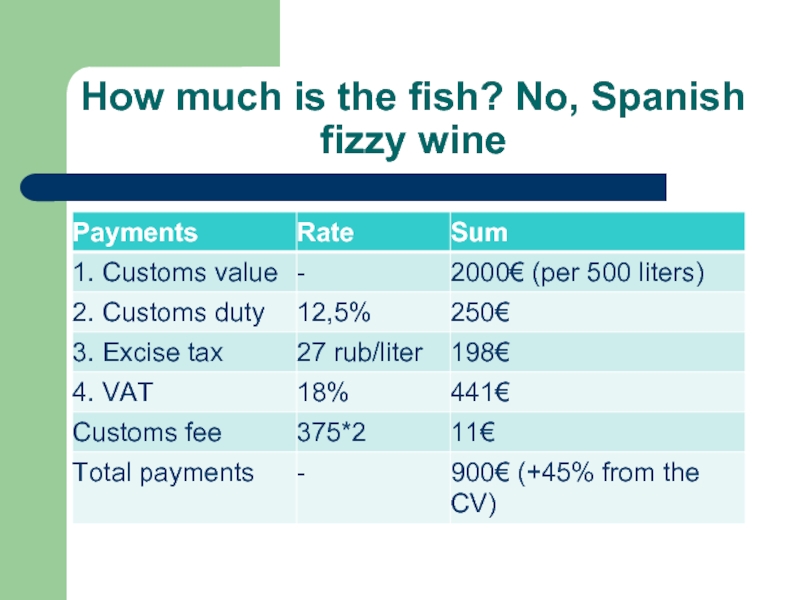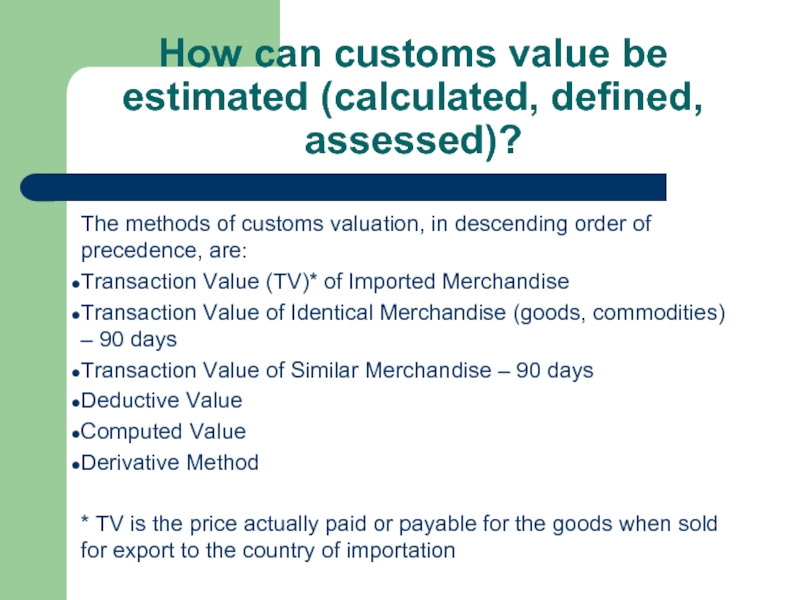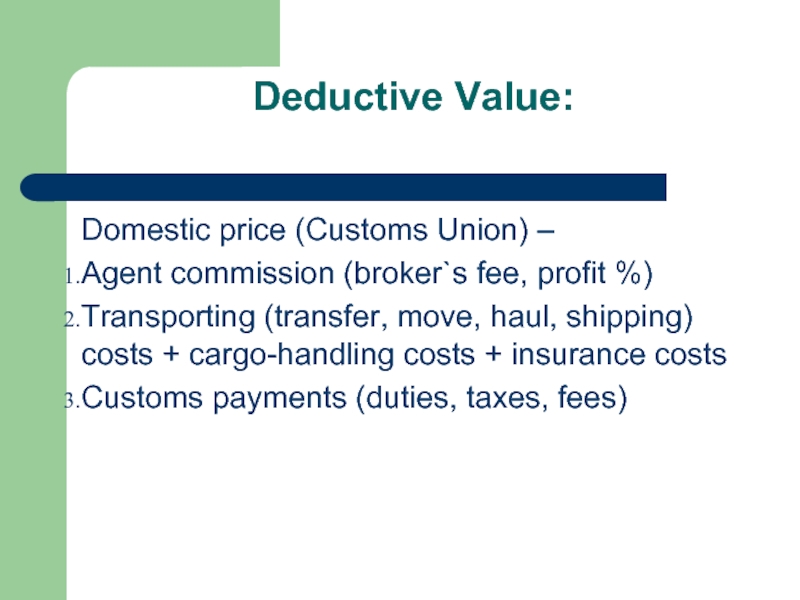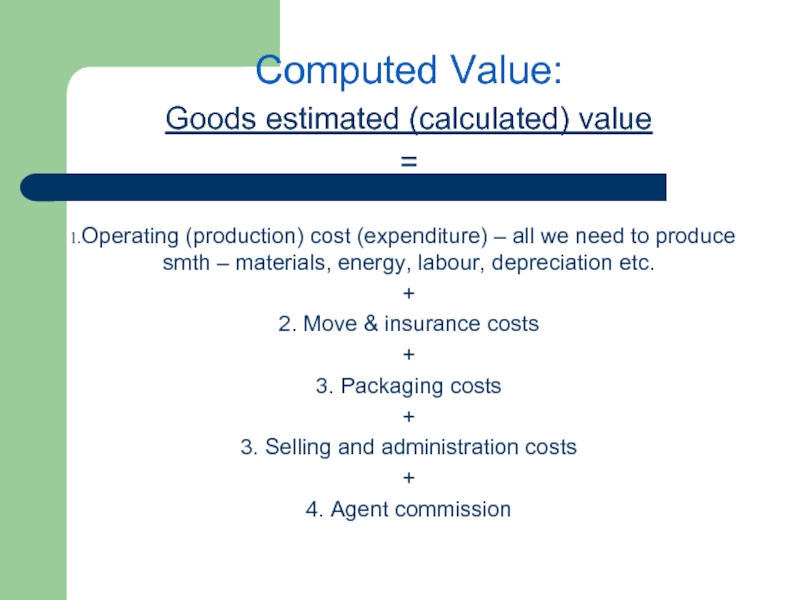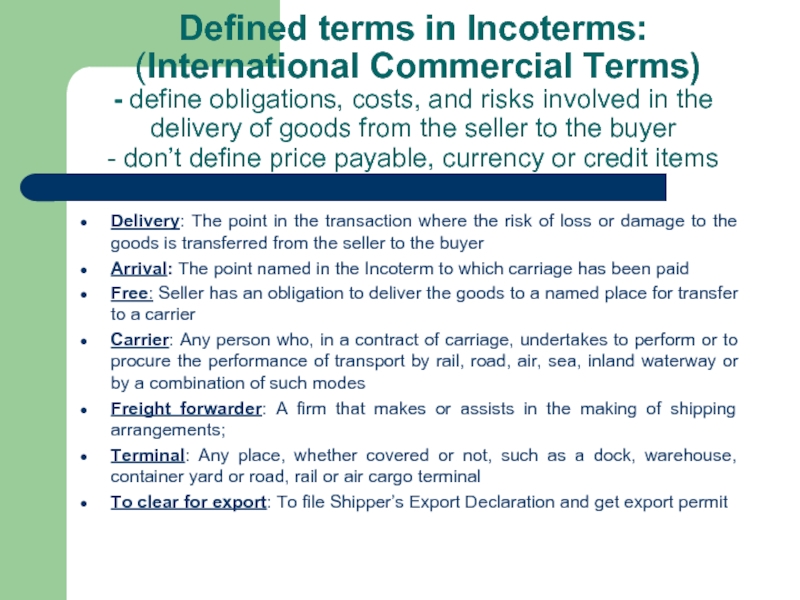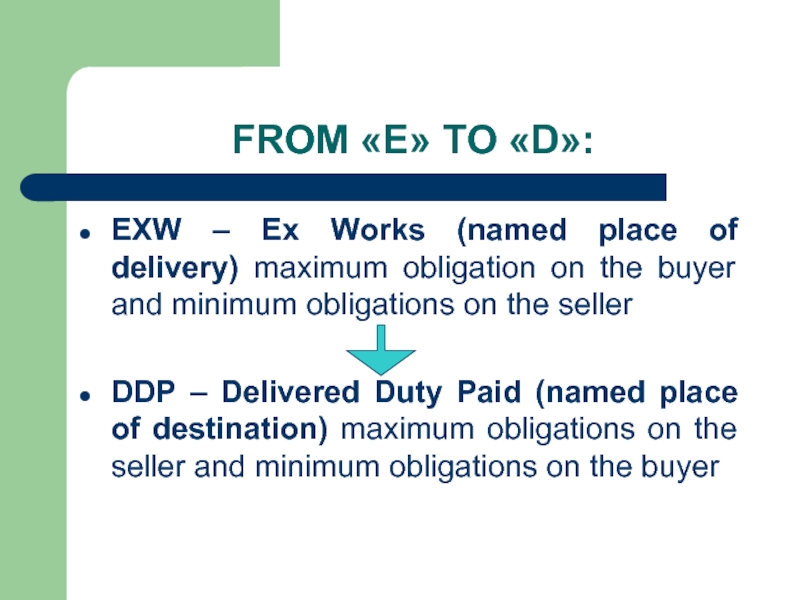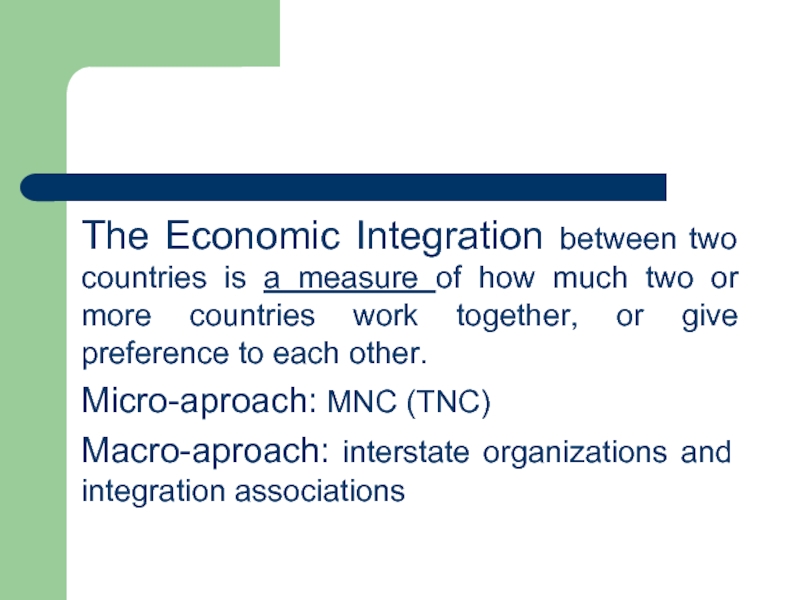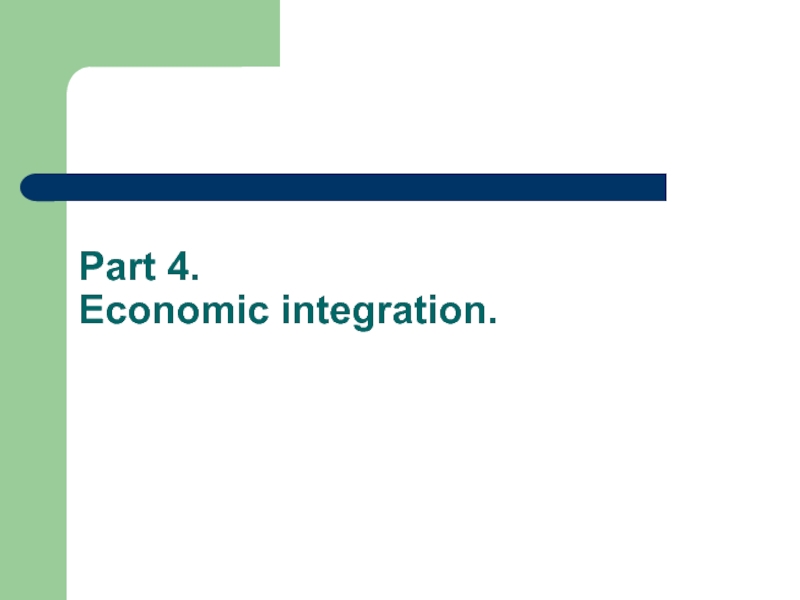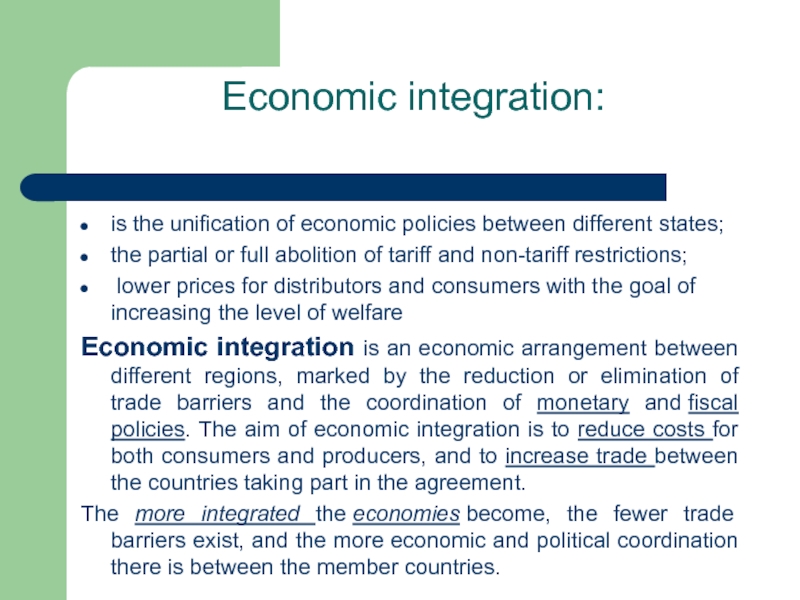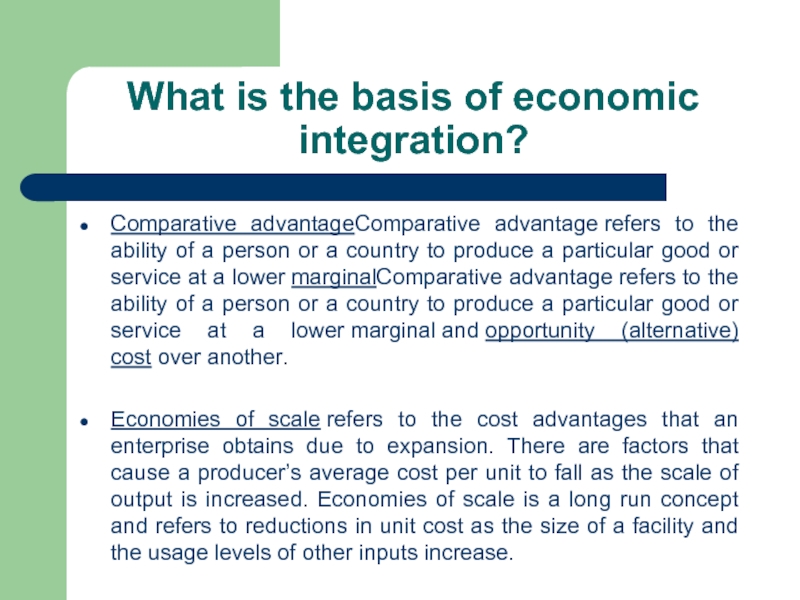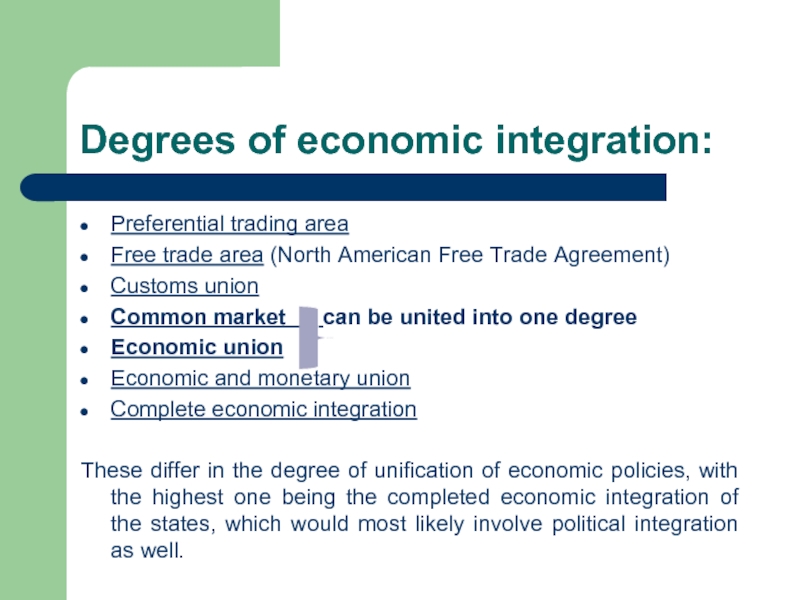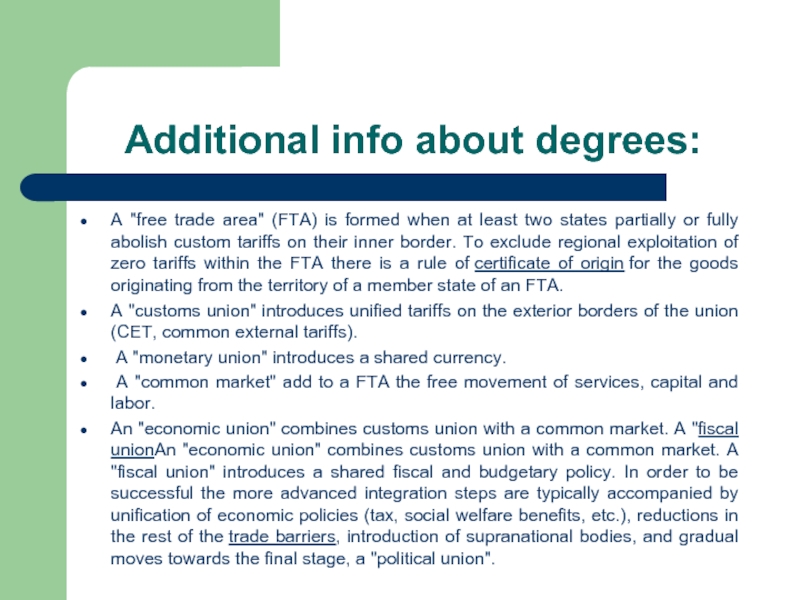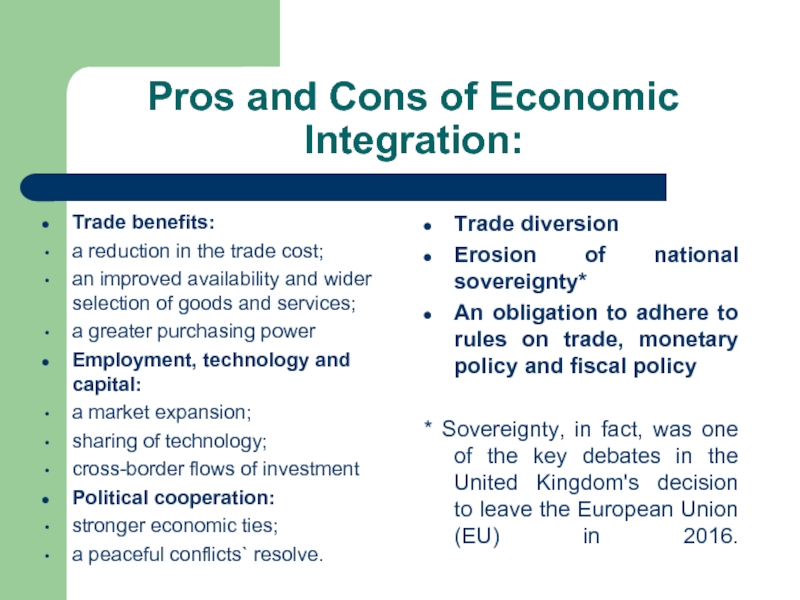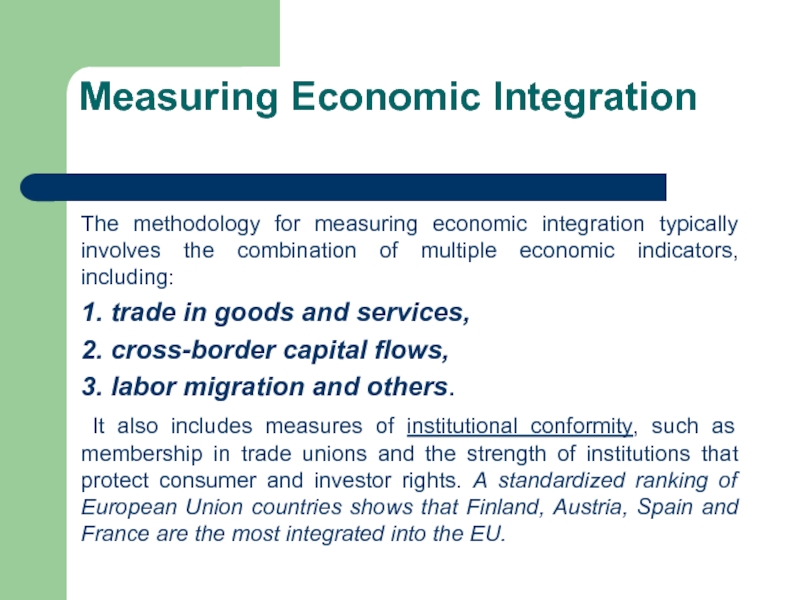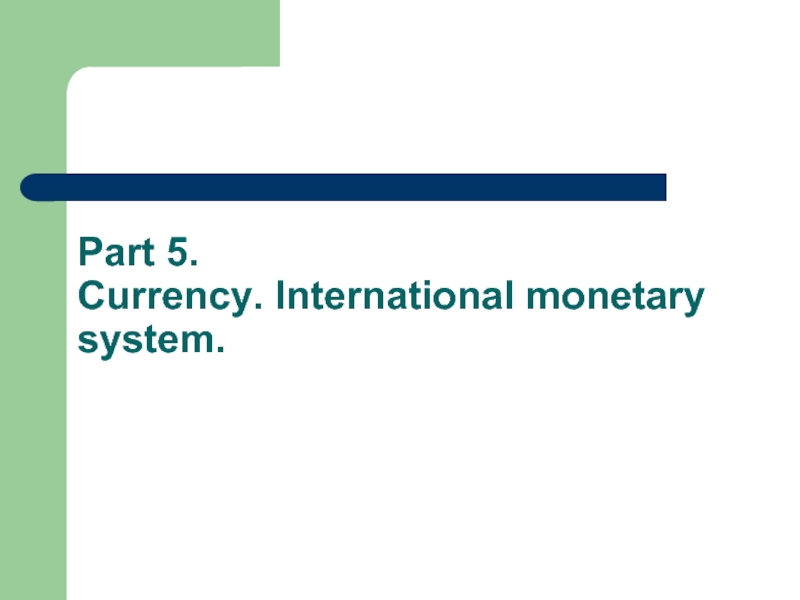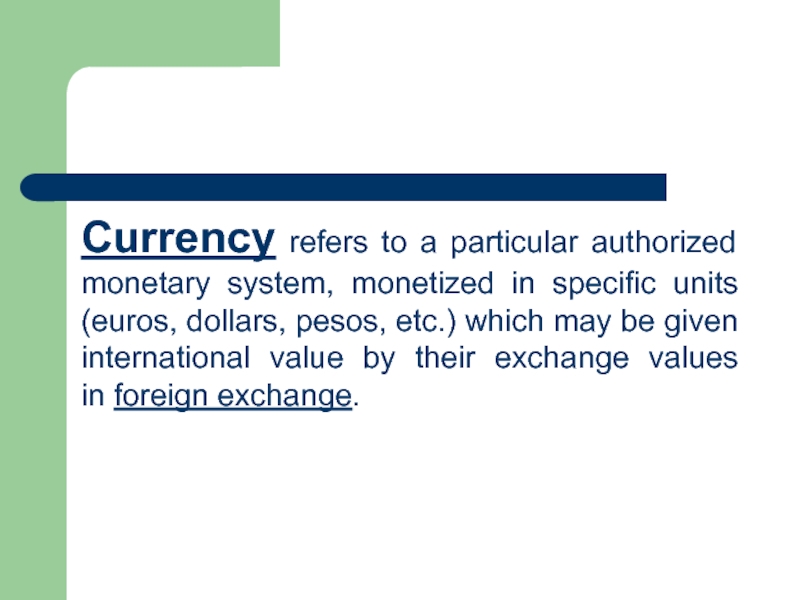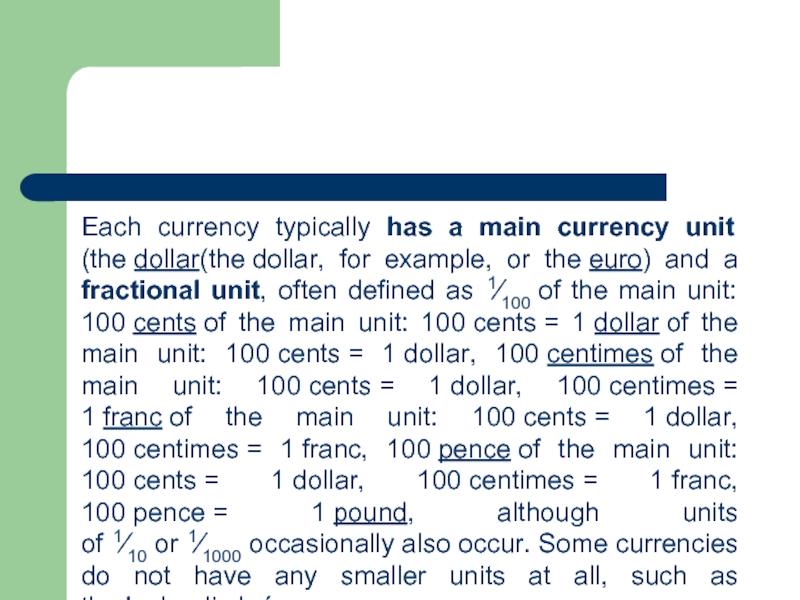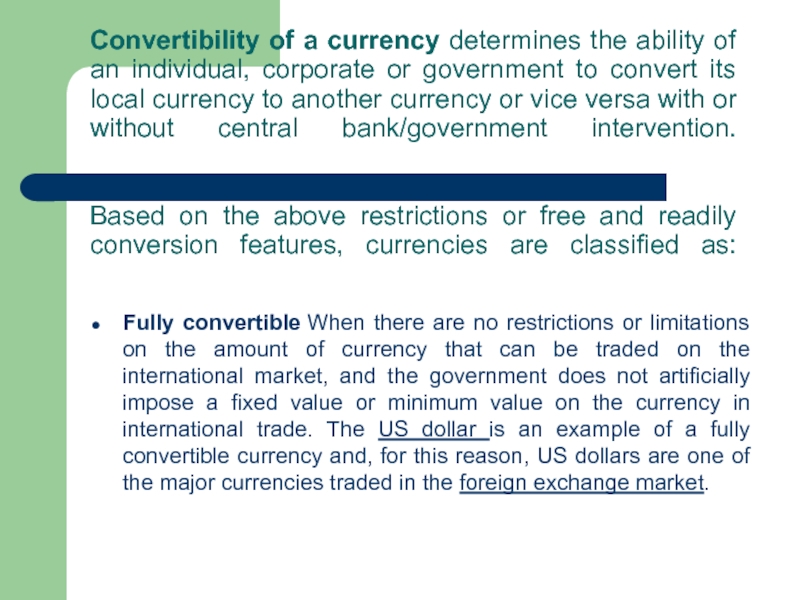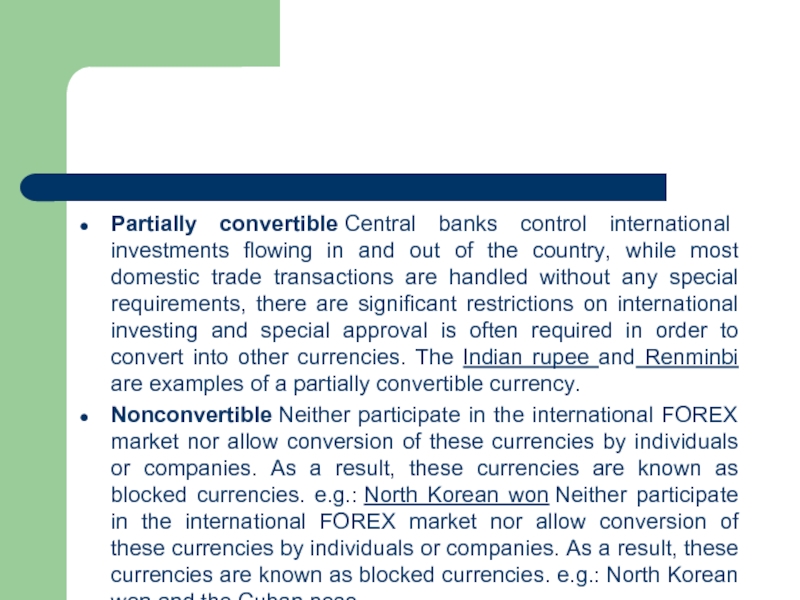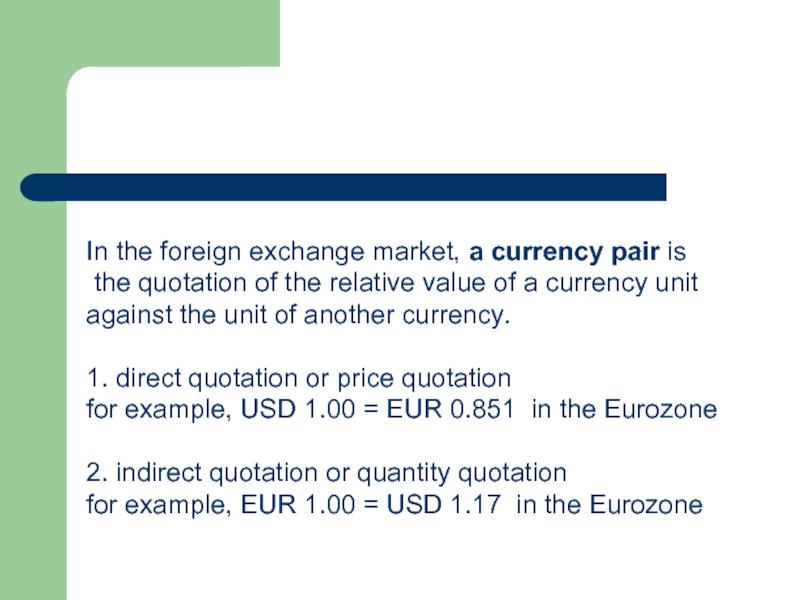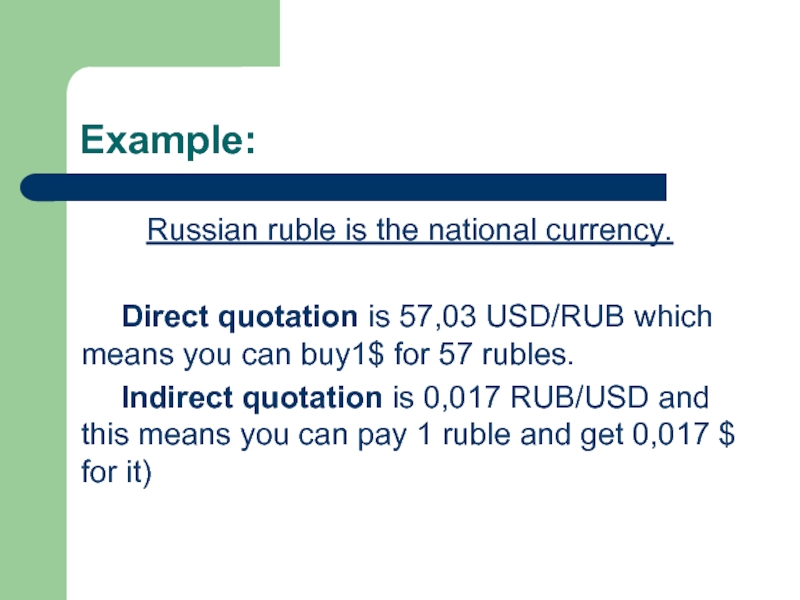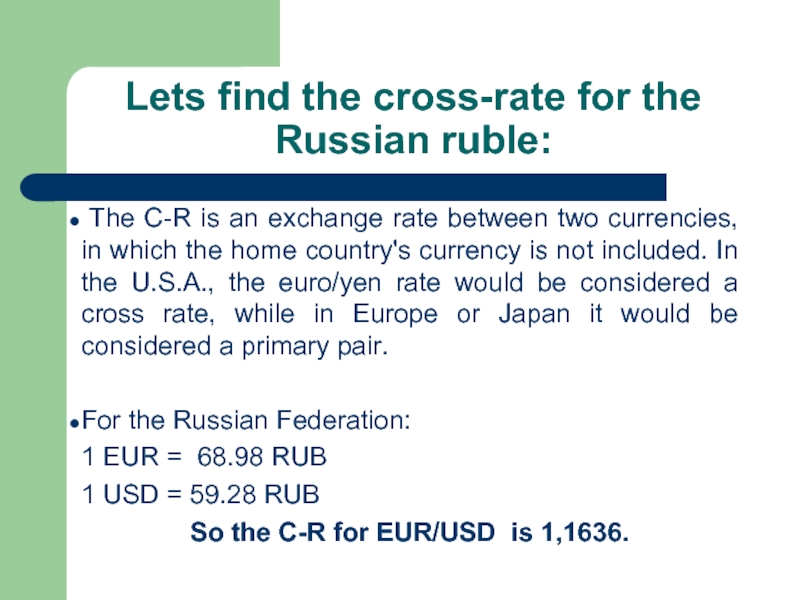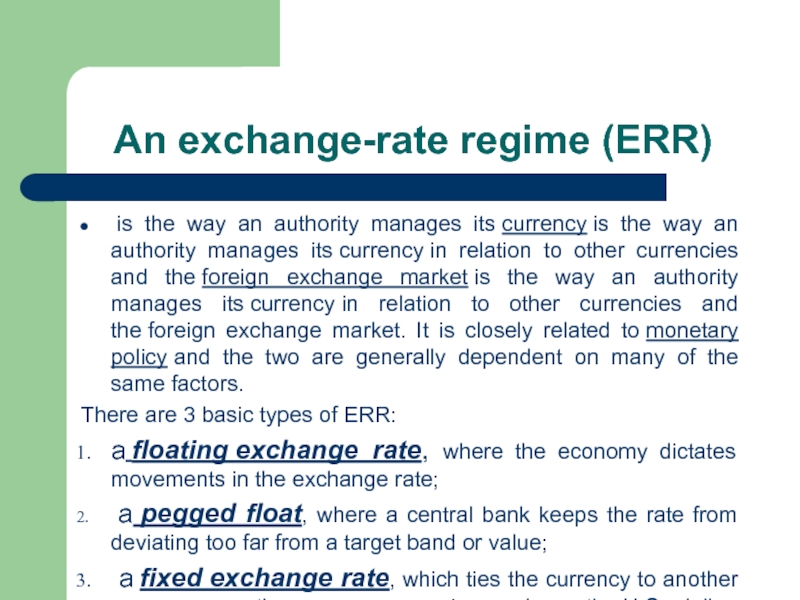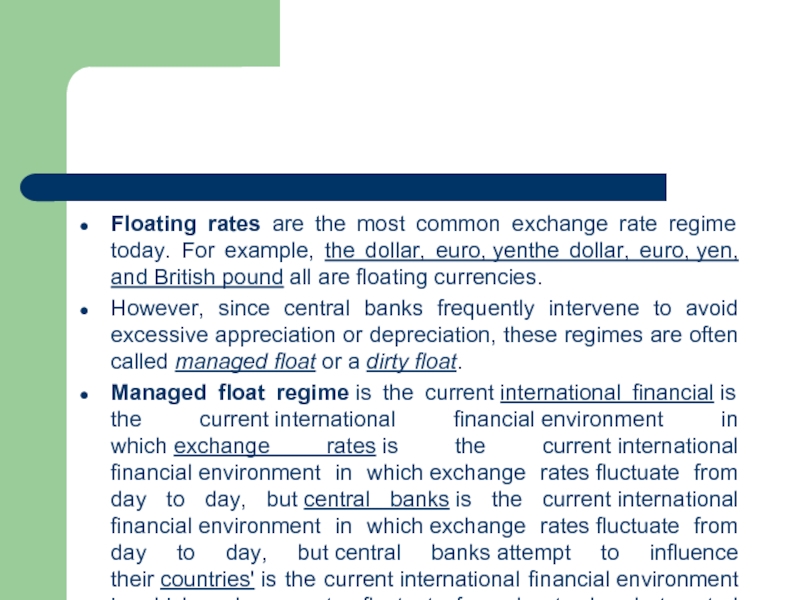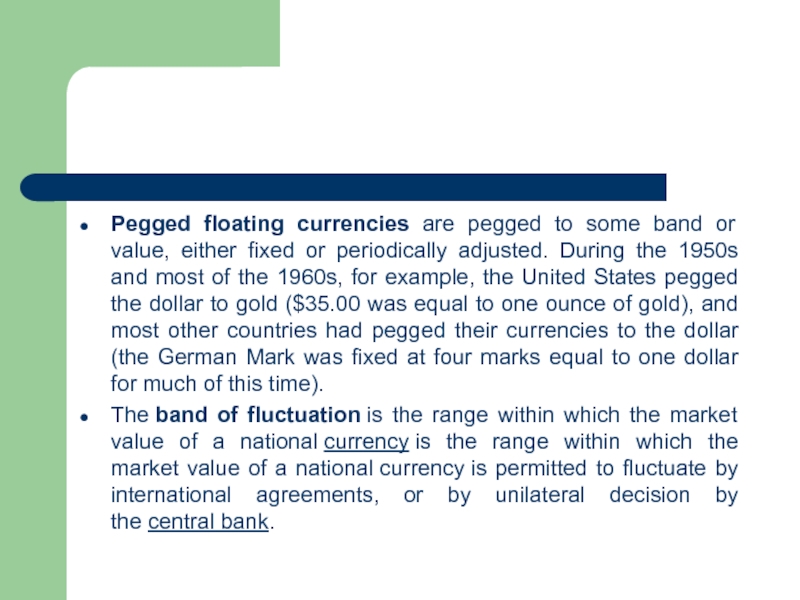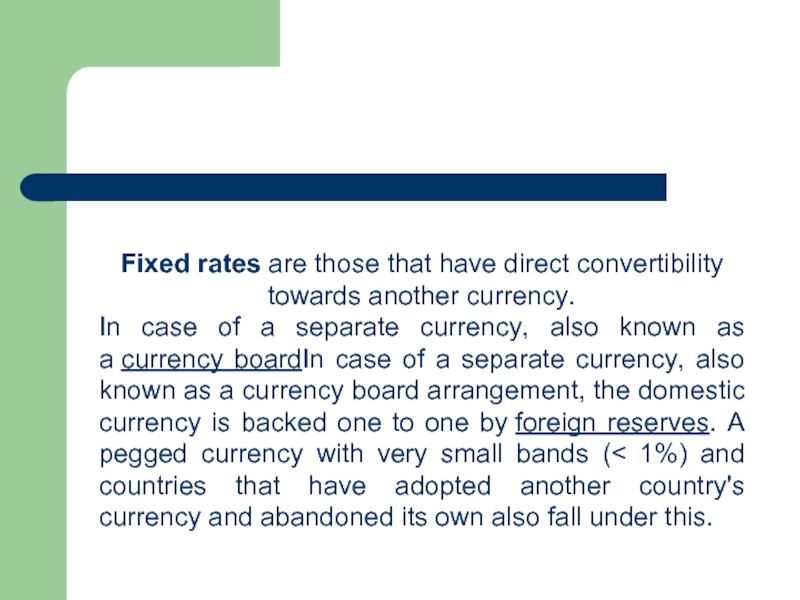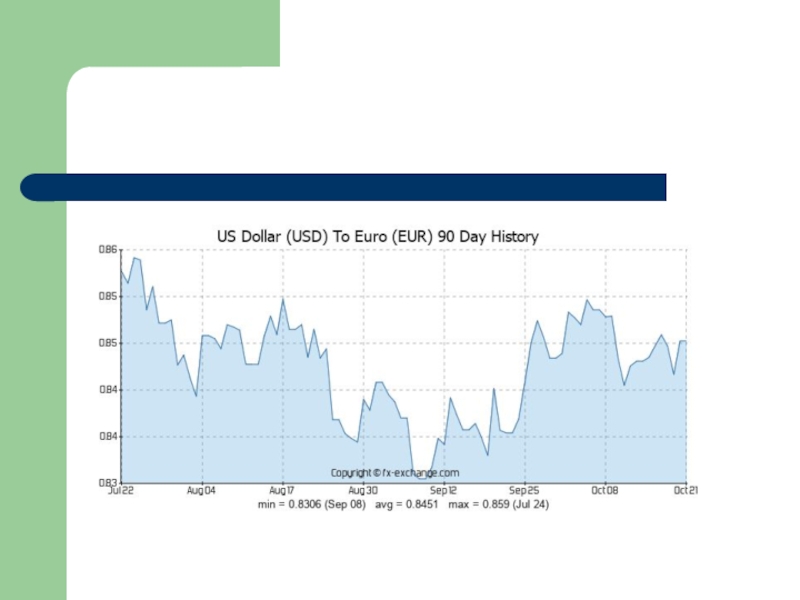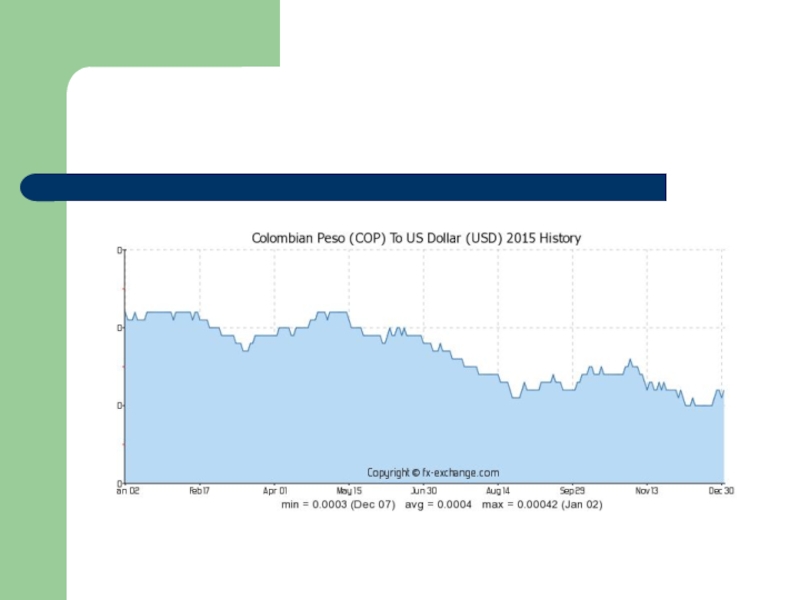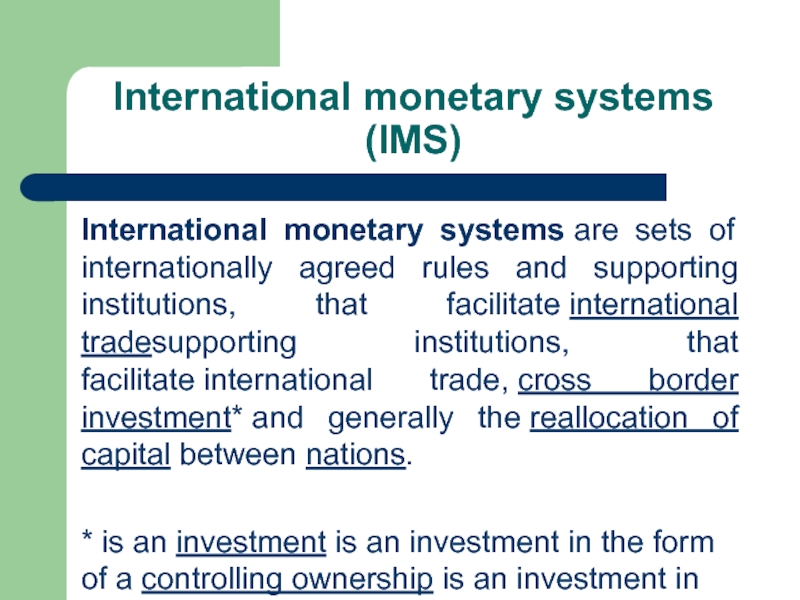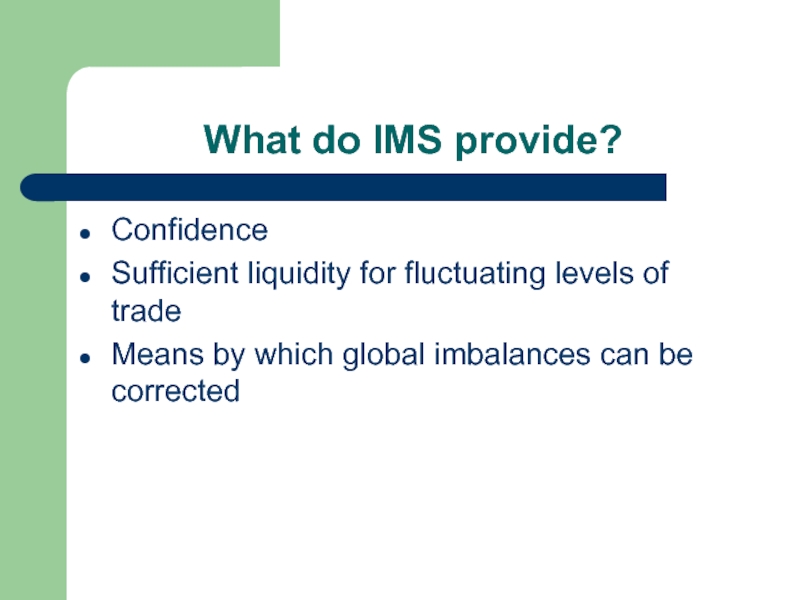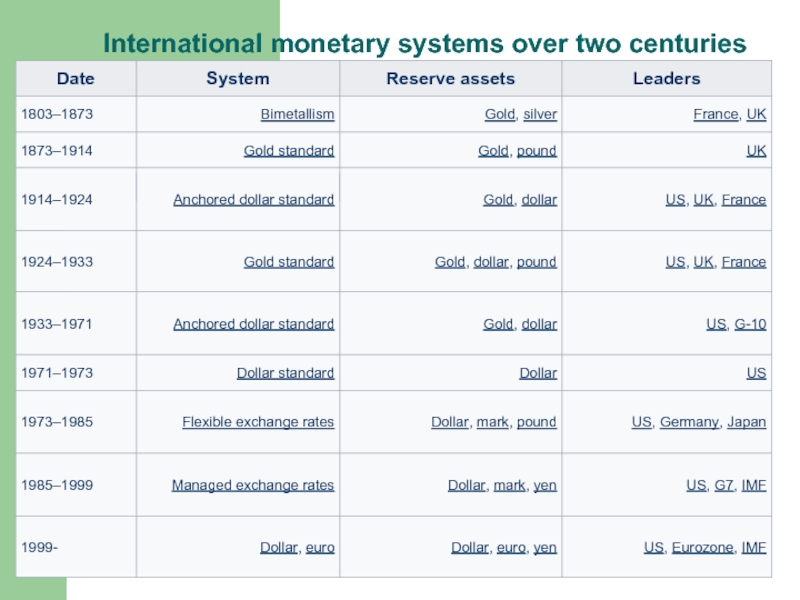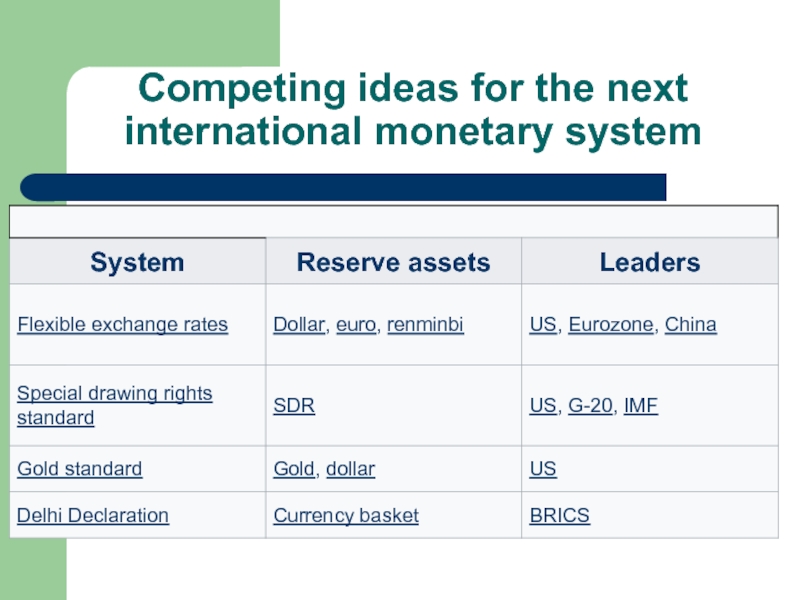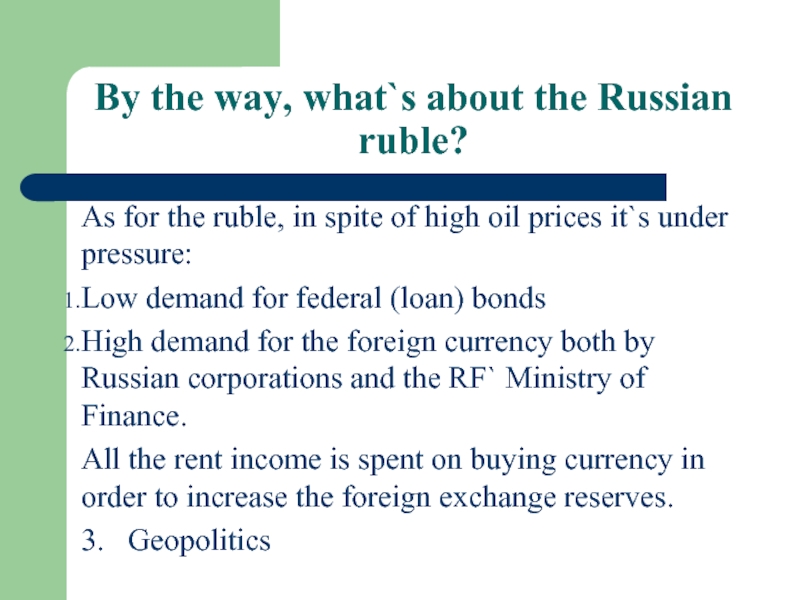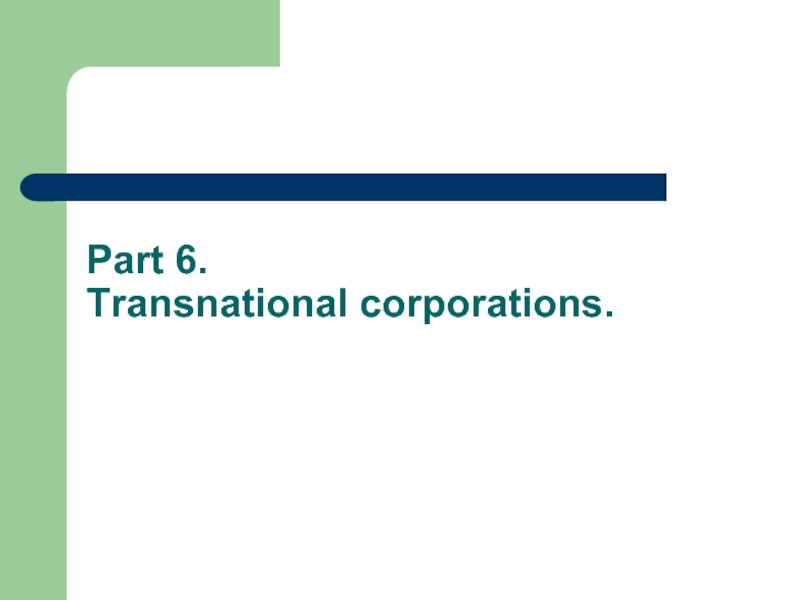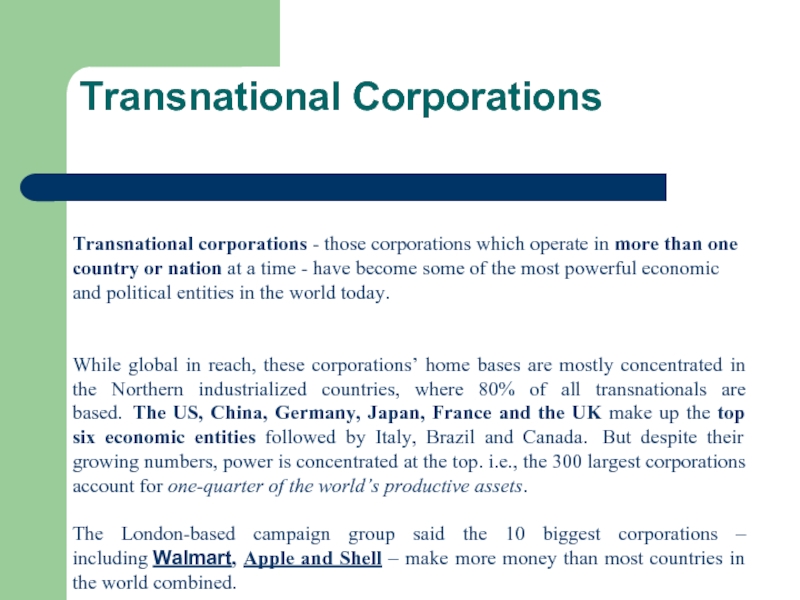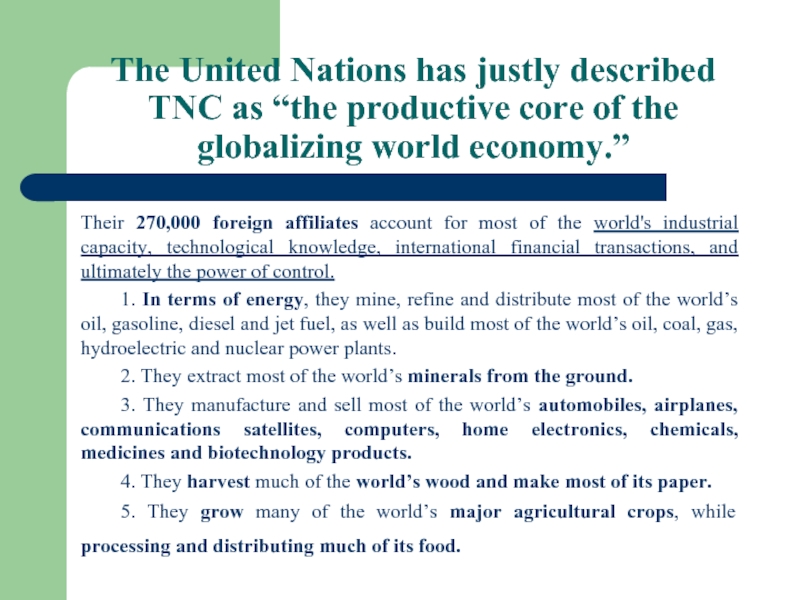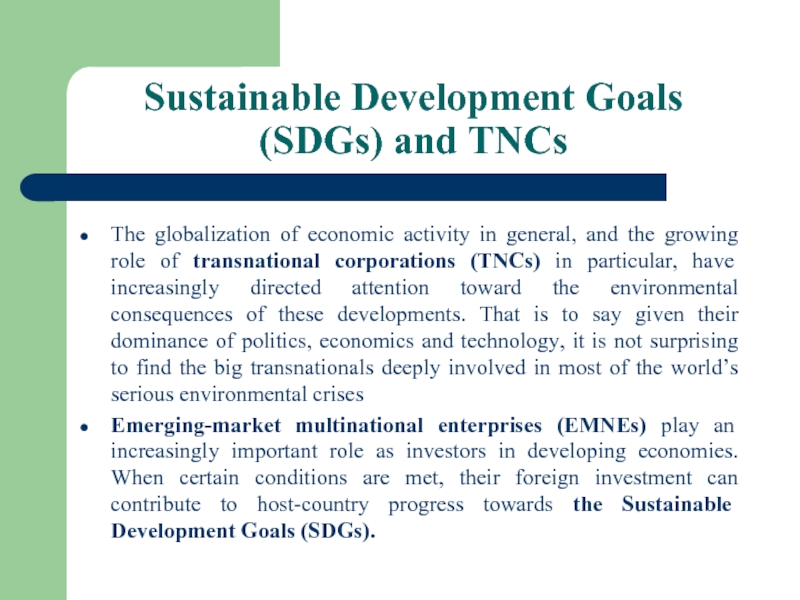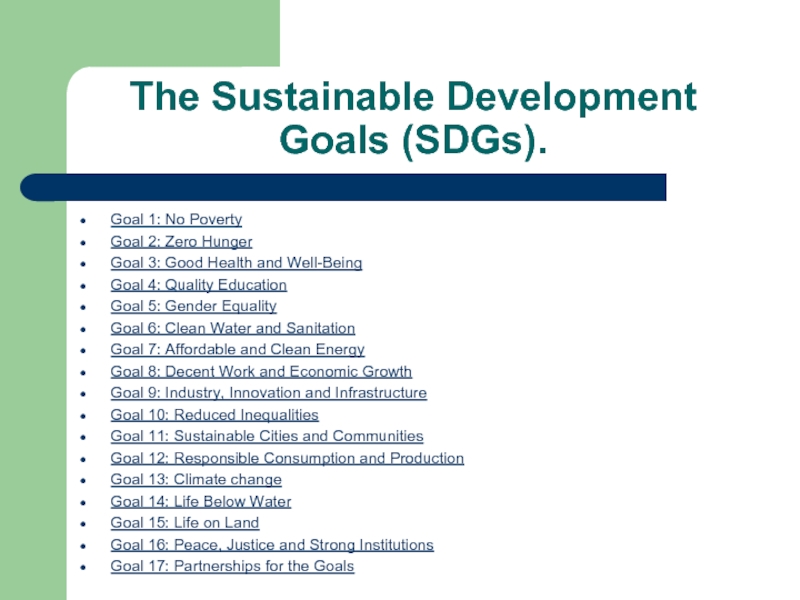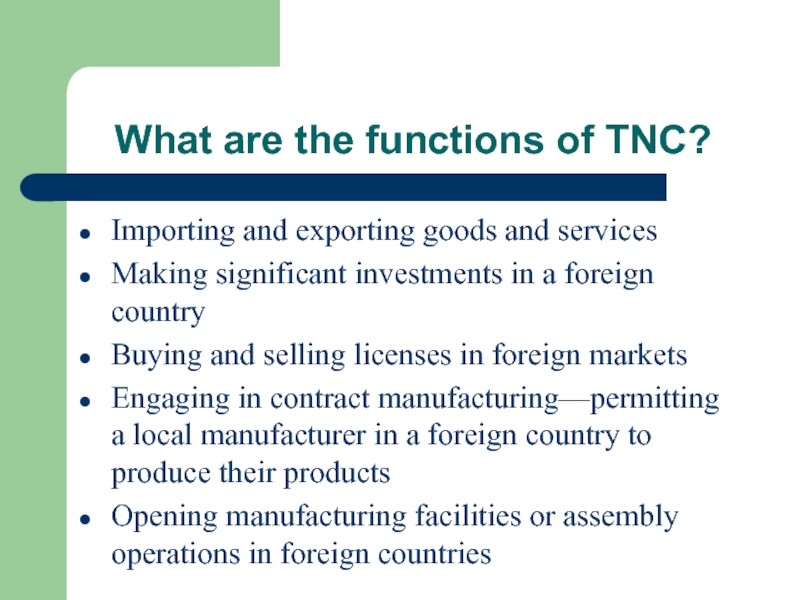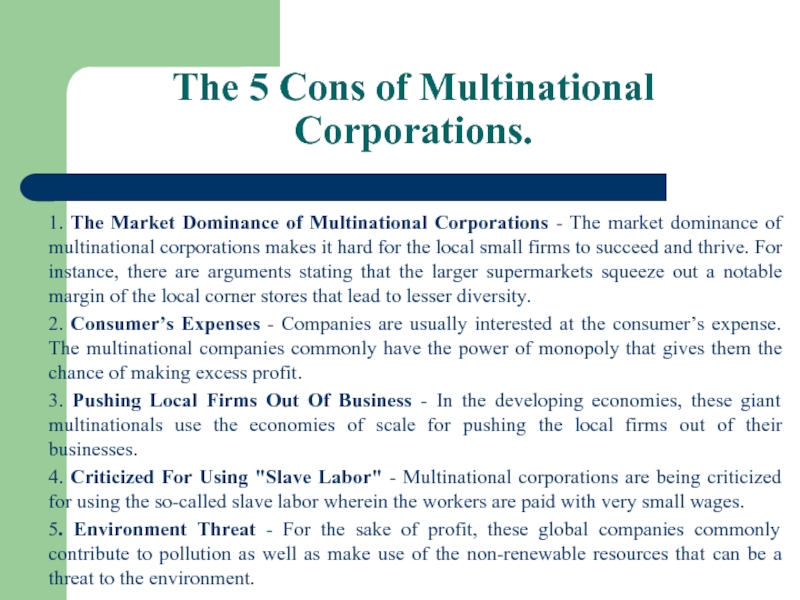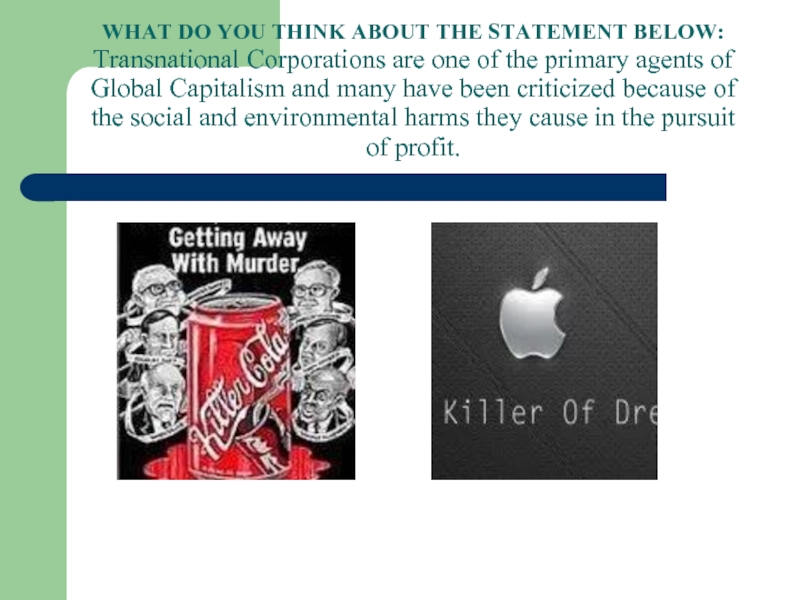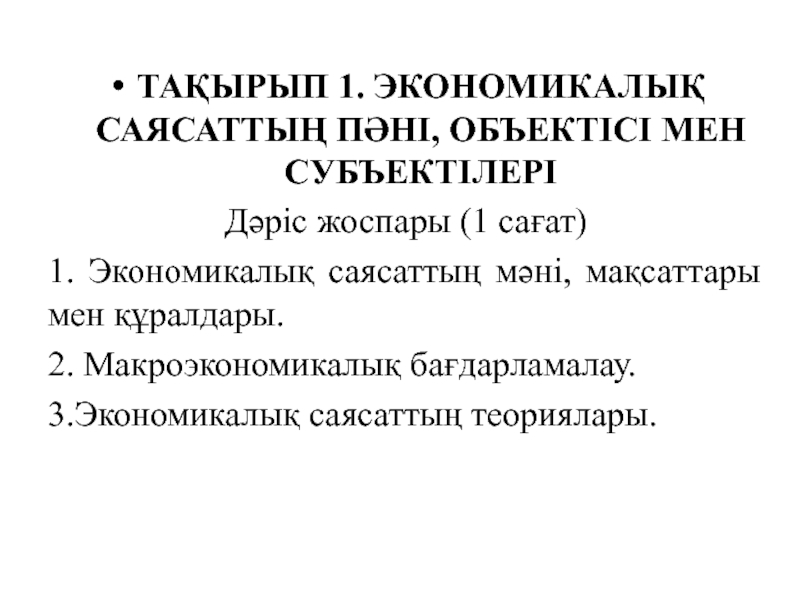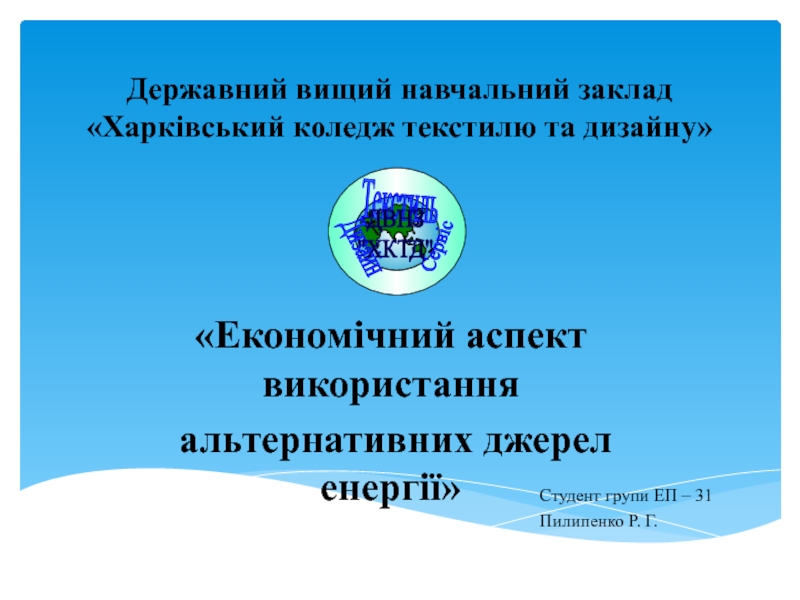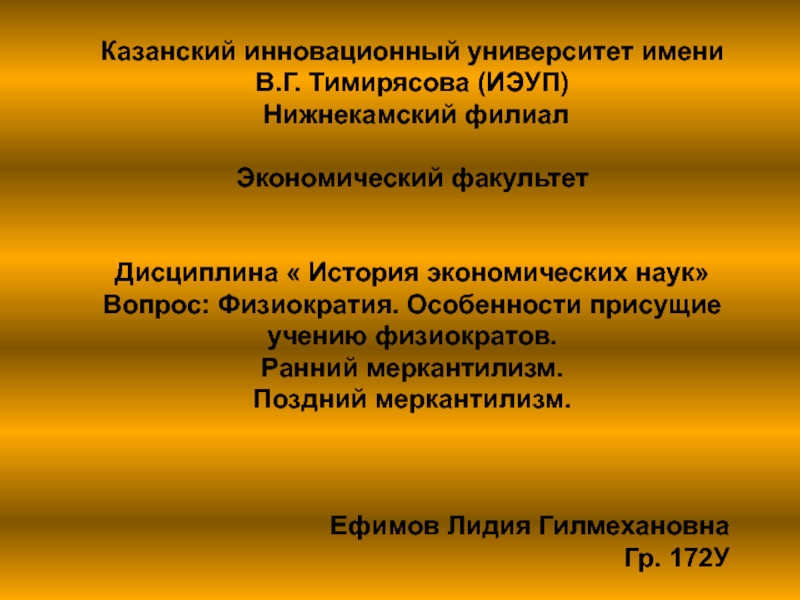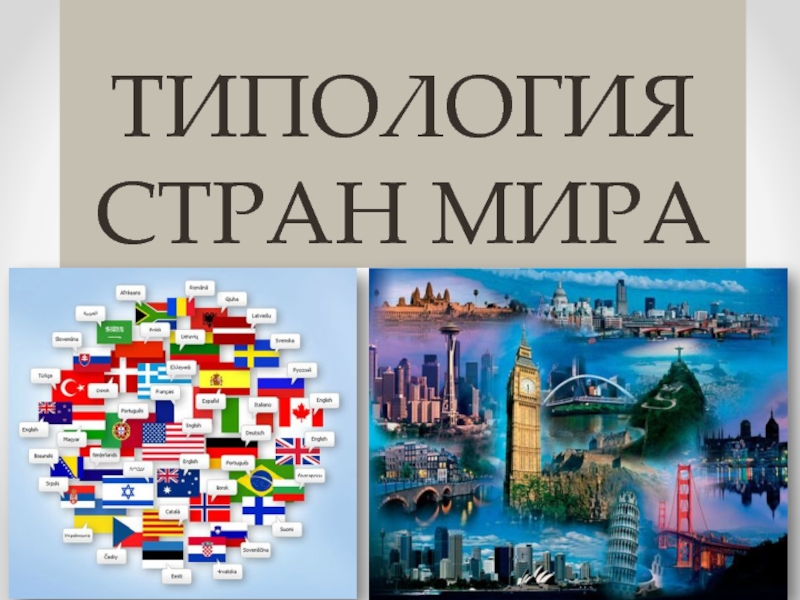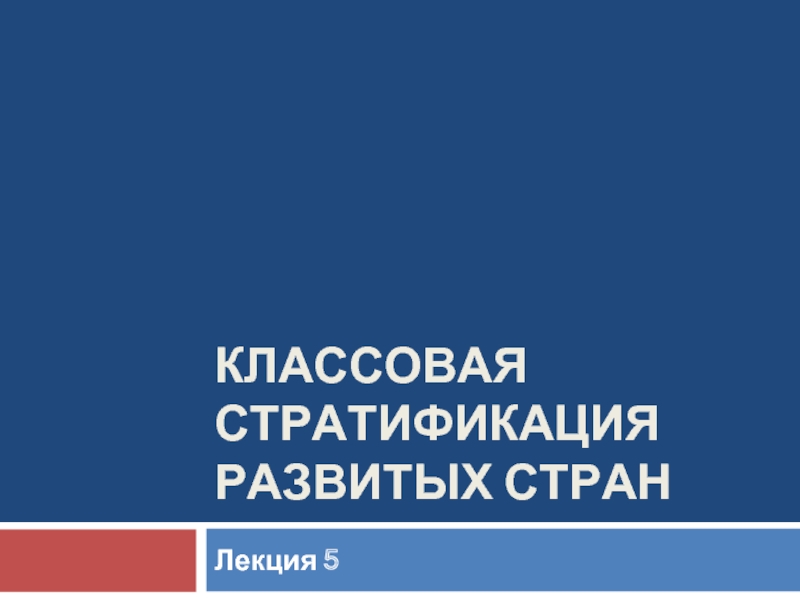- Главная
- Разное
- Дизайн
- Бизнес и предпринимательство
- Аналитика
- Образование
- Развлечения
- Красота и здоровье
- Финансы
- Государство
- Путешествия
- Спорт
- Недвижимость
- Армия
- Графика
- Культурология
- Еда и кулинария
- Лингвистика
- Английский язык
- Астрономия
- Алгебра
- Биология
- География
- Детские презентации
- Информатика
- История
- Литература
- Маркетинг
- Математика
- Медицина
- Менеджмент
- Музыка
- МХК
- Немецкий язык
- ОБЖ
- Обществознание
- Окружающий мир
- Педагогика
- Русский язык
- Технология
- Физика
- Философия
- Химия
- Шаблоны, картинки для презентаций
- Экология
- Экономика
- Юриспруденция
Global economy and World Economic Relations (WER) презентация
Содержание
- 1. Global economy and World Economic Relations (WER)
- 2. CONTENT: 1. General definitions and terms of
- 3. Part 1. General definitions and terms of GE.
- 4. The difference between similar terms:
- 5. The world economy or global economy is the economy of the world, considered
- 6. A subject matter of GE is WER.
- 7. BACKGROUND AND FORMATION PERIOD OF GE:
- 8. IDL - the allocation of various parts
- 9. GENERAL MEANING OF THE TERM «GE»:
- 10. Stages of GE’s formation: Age of
- 12. GE – a
- 13. World Trade theories:
- 14. Part 2. Theories of WT.
- 15. Adam Smith VS David Ricardo: 2
- 16. Basics of Heckscher Ohlin theory: 2 countries
- 17. The H-O theory says that countries will
- 19. Product Life-Cycle Model by Vernon
- 20. Part 3. WT regulation. Free trading and protectionism. INCOTERMS 2010.
- 21. 2 ways to control world trade by
- 22. FREETRADING PROS Market saturation with
- 23. What`s the difference between tradable and non-tradable
- 24. To trade or not to trade?
- 25. Tariff and Non-tariff Regulations (the Customs Code
- 26. Eurasian Economic Union is an economic unionis
- 27. Duty VS Fee (Charge) Import VS
- 28. Russia VS other countries General rate of duties Most favoured nation treatment Preferential duties
- 29. Let`s count all our customs payments: Customs
- 30. How much is the fish? No, Spanish fizzy wine
- 31. How сan customs value be estimated (calculated,
- 32. Deductive Value: Domestic price (Customs
- 33. Computed Value: Goods estimated (calculated) value
- 34. Defined terms in Incoterms: (International Commercial Terms)
- 35. FROM «E» TO «D»: EXW – Ex
- 36. The Economic Integration between two countries is
- 37. Part 4. Economic integration.
- 38. Economic integration: is the unification of
- 39. What is the basis of economic integration?
- 40. Degrees of economic integration: Preferential trading area
- 41. Additional info about degrees: A "free trade
- 42. Pros and Cons of Economic Integration: Trade
- 43. Measuring Economic Integration The methodology for
- 44. Part 5. Currency. International monetary system.
- 45. Currency refers to a particular authorized monetary
- 46. Each currency typically has a main currency
- 47. Convertibility of a currency determines the ability
- 48. Partially convertible Central banks control international investments flowing
- 49. In the foreign exchange market, a
- 50. Example: Russian ruble is the national currency.
- 51. Lets find the cross-rate for the Russian
- 52. An exchange-rate regime (ERR) is the way an
- 53. Floating rates are the most common exchange
- 54. Pegged floating currencies are pegged to some
- 55. Fixed rates are those that have direct
- 58. International monetary systems (IMS) International monetary systems are
- 59. What do IMS provide? Confidence Sufficient liquidity
- 60. International monetary systems over two centuries
- 61. Competing ideas for the next international monetary system
- 62. By the way, what`s about the Russian
- 63. Part 6. Transnational corporations.
- 64. Transnational Corporations
- 65. The United Nations has justly described TNC
- 66. Sustainable Development Goals (SDGs) and TNCs
- 67. The Sustainable Development Goals (SDGs). Goal 1:
- 68. What are the functions of TNC? Importing
- 69. The 5 Cons of Multinational Corporations.
- 70. WHAT DO YOU THINK ABOUT THE STATEMENT
Слайд 2CONTENT:
1. General definitions and terms of GE.
2. Theories of the world
3. WT regulation. Free trading and protectionism. INCOTERMS 2010.
4. Economic integration.
5. Currency. International monetary system.
6. Transnational companies.
Слайд 4
The difference between similar terms:
economic/economical
Economic pertains to the economy.
Economical means not wasteful.
economy/economics
The economy is
Economics is a science that studies economies and develops possible models for their functioning (He studied economics at the LSE (London School of Economics).
Слайд 5 The world economy or global economy is the economy of the world, considered as the international exchange
In some contexts, the two terms are distinguished: the "international" or "global economy" being measured separately and distinguished from national economies while the "world economy" is simply an aggregate of the separate countries' measurements.
Слайд 6A subject matter of GE is WER.
WER:
trade of goods and services;
capital
labour migration;
intellectual property trade;
currency relations;
credit relations (World Bank, International Monetary Fund );
co-operation of production (multinational companies/transnational corporations).
Слайд 7BACKGROUND AND FORMATION PERIOD OF GE:
1. Definition of GE and global
2. International division of labour (IDL)
and factors of production.
3. Groups of countries in GE.
Слайд 8IDL - the allocation of various parts of the production process
2 main processes of IDL:
specialization
co-operation
Слайд 9 GENERAL MEANING OF THE TERM «GE»:
a system of world
A combination of different economic sectors and branches of national economies;
national economies` unity and world economic relations that help to make a complete and stable system.
Слайд 10Stages of GE’s formation:
Age of Discovery
Before the 1st World War
Between 2
From the 2nd World War to the 80th
Nowadays
Слайд 12 GE – a system of Goods, Services and Capital exchange between
Entirety/ unity
Hierarchy |ˈhʌɪərɑːki|
Self-adjustment/ self-regulation
Adaptation
Слайд 13
World Trade theories:
Mercantilism
Absolute advantages
Comparative advantages
Heckscher-Ohlin theorem
Technological gap by Posner and Product
Слайд 15
Adam Smith VS David Ricardo:
2 countries and 2 items of goods
Alternative costs for the cloth in England are lower than in Portugal: 0,83 instead of 1,125 per a unit of wine.
The same situation is with wine for Portugal to export: 0,89 instead of 1,2 per a unit of cloth.
Слайд 16Basics of Heckscher Ohlin theory:
2 countries
2 items of goods –
2 resources – Labour and Land (to produce the items) (you can also take Capital instead, but you should change an item of goods – cars for example)
2 production possibility curves (combination of 2 goods` max production with full usage of production factors in a country)
2 indifference curves (geometrical combination of 2 goods with equal utility)
There are also some assumptions☺
Слайд 17The H-O theory says that countries will export products that use
Слайд 212 ways to control world trade by a state : free-trade
PROS
It`s profitable (beneficial).
Usually customers get quality goods for a lower price.
CONS
Domestic goods can`t meet competition, with low demand and production level.
As a result people don`t get a salary (are not paid) and their ability to pay goes down (reduces)
Слайд 22FREETRADING
PROS
Market saturation with cheap & quality goods
Growing of foreign tax
New workplaces
CONS
Guess what)
Addiction to (dependence on) imported goods
Bull market or it simply raises prices….
Слайд 23What`s the difference between tradable and non-tradable goods:
С.Л. Еремина Мировая экономика
A
A balance of D&S for NTG is more important for there`s no opportunity to substitute them with foreign goods;
Local (domestic) prices for TG and their change (rise & fall) usually depends on foreign one.
Слайд 25Tariff and Non-tariff Regulations (the Customs Code of the Customs Union –
Duty rate (custom tariff)
Customs duties
Customs Commodity Code (FEACN - Foreign Economic Activity Commodity Nomenclature)
Licensing
Quota allocation (setting quotas) (+voluntary export restrictions)
Certification
Safeguards (special safeguard measures:
special custom duty
antidumping duty
countervailing (compensatory) duty
Слайд 26Eurasian Economic Union
is an economic unionis an economic union of states located primarily in
The Treaty aiming for the establishment of the EAEU was signed on 29 May 2014 by the leaders of BelarusThe Treaty aiming for the establishment of the EAEU was signed on 29 May 2014 by the leaders of Belarus, KazakhstanThe Treaty aiming for the establishment of the EAEU was signed on 29 May 2014 by the leaders of Belarus, Kazakhstan and Russia, and came into force on 1 January 2015.
Treaties aiming for ArmeniaTreaties aiming for Armenia's and Kyrgyzstan's accession to the Eurasian Economic Union were signed on 9 October and 23 December 2014, respectively.
Слайд 27Duty VS Fee (Charge)
Import VS Export
ad valorem duties
fixed (specific) duties
combined
customs processing fee
charge for clearance
terminal handling charges
Слайд 28Russia VS other countries
General rate of duties
Most favoured nation treatment
Preferential duties
Слайд 29Let`s count all our customs payments:
Customs value (cost)
Customs duty
Excise tax
VAT
Customs fee
Слайд 31How сan customs value be estimated (calculated, defined, assessed)?
The methods of
Transaction Value (TV)* of Imported Merchandise
Transaction Value of Identical Merchandise (goods, commodities) – 90 days
Transaction Value of Similar Merchandise – 90 days
Deductive Value
Computed Value
Derivative Method
* TV is the price actually paid or payable for the goods when sold for export to the country of importation
Слайд 32Deductive Value:
Domestic price (Customs Union) –
Agent commission (broker`s fee,
Transporting (transfer, move, haul, shipping) costs + cargo-handling costs + insurance costs
Customs payments (duties, taxes, fees)
Слайд 33Computed Value:
Goods estimated (calculated) value
=
Operating (production) cost (expenditure) –
+
2. Move & insurance costs
+
3. Packaging costs
+
3. Selling and administration costs
+
4. Agent commission
Слайд 34Defined terms in Incoterms: (International Commercial Terms) - define obligations, costs, and risks
Delivery: The point in the transaction where the risk of loss or damage to the goods is transferred from the seller to the buyer
Arrival: The point named in the Incoterm to which carriage has been paid
Free: Seller has an obligation to deliver the goods to a named place for transfer to a carrier
Carrier: Any person who, in a contract of carriage, undertakes to perform or to procure the performance of transport by rail, road, air, sea, inland waterway or by a combination of such modes
Freight forwarder: A firm that makes or assists in the making of shipping arrangements;
Terminal: Any place, whether covered or not, such as a dock, warehouse, container yard or road, rail or air cargo terminal
To clear for export: To file Shipper’s Export Declaration and get export permit
Слайд 35FROM «E» TO «D»:
EXW – Ex Works (named place of delivery)
DDP – Delivered Duty Paid (named place of destination) maximum obligations on the seller and minimum obligations on the buyer
Слайд 36The Economic Integration between two countries is a measure of how
Micro-aproach: MNC (TNC)
Macro-aproach: interstate organizations and integration associations
Слайд 38Economic integration:
is the unification of economic policies between different states;
the partial
lower prices for distributors and consumers with the goal of increasing the level of welfare
Economic integration is an economic arrangement between different regions, marked by the reduction or elimination of trade barriers and the coordination of monetary and fiscal policies. The aim of economic integration is to reduce costs for both consumers and producers, and to increase trade between the countries taking part in the agreement.
The more integrated the economies become, the fewer trade barriers exist, and the more economic and political coordination there is between the member countries.
Слайд 39What is the basis of economic integration?
Comparative advantageComparative advantage refers to the
Economies of scale refers to the cost advantages that an enterprise obtains due to expansion. There are factors that cause a producer’s average cost per unit to fall as the scale of output is increased. Economies of scale is a long run concept and refers to reductions in unit cost as the size of a facility and the usage levels of other inputs increase.
Слайд 40Degrees of economic integration:
Preferential trading area
Free trade area (North American Free
Customs union
Common market can be united into one degree
Economic union
Economic and monetary union
Complete economic integration
These differ in the degree of unification of economic policies, with the highest one being the completed economic integration of the states, which would most likely involve political integration as well.
Слайд 41Additional info about degrees:
A "free trade area" (FTA) is formed when
A "customs union" introduces unified tariffs on the exterior borders of the union (CET, common external tariffs).
A "monetary union" introduces a shared currency.
A "common market" add to a FTA the free movement of services, capital and labor.
An "economic union" combines customs union with a common market. A "fiscal unionAn "economic union" combines customs union with a common market. A "fiscal union" introduces a shared fiscal and budgetary policy. In order to be successful the more advanced integration steps are typically accompanied by unification of economic policies (tax, social welfare benefits, etc.), reductions in the rest of the trade barriers, introduction of supranational bodies, and gradual moves towards the final stage, a "political union".
Слайд 42Pros and Cons of Economic Integration:
Trade benefits:
a reduction in the
an improved availability and wider selection of goods and services;
a greater purchasing power
Employment, technology and capital:
a market expansion;
sharing of technology;
cross-border flows of investment
Political cooperation:
stronger economic ties;
a peaceful conflicts` resolve.
Trade diversion
Erosion of national sovereignty*
An obligation to adhere to rules on trade, monetary policy and fiscal policy
* Sovereignty, in fact, was one of the key debates in the United Kingdom's decision to leave the European Union (EU) in 2016.
Слайд 43Measuring Economic Integration
The methodology for measuring economic integration typically involves the
1. trade in goods and services,
2. cross-border capital flows,
3. labor migration and others.
It also includes measures of institutional conformity, such as membership in trade unions and the strength of institutions that protect consumer and investor rights. A standardized ranking of European Union countries shows that Finland, Austria, Spain and France are the most integrated into the EU.
Слайд 45Currency refers to a particular authorized monetary system, monetized in specific
Слайд 46Each currency typically has a main currency unit (the dollar(the dollar, for example,
Слайд 47Convertibility of a currency determines the ability of an individual, corporate
Fully convertible When there are no restrictions or limitations on the amount of currency that can be traded on the international market, and the government does not artificially impose a fixed value or minimum value on the currency in international trade. The US dollar is an example of a fully convertible currency and, for this reason, US dollars are one of the major currencies traded in the foreign exchange market.
Слайд 48Partially convertible Central banks control international investments flowing in and out of
Nonconvertible Neither participate in the international FOREX market nor allow conversion of these currencies by individuals or companies. As a result, these currencies are known as blocked currencies. e.g.: North Korean won Neither participate in the international FOREX market nor allow conversion of these currencies by individuals or companies. As a result, these currencies are known as blocked currencies. e.g.: North Korean won and the Cuban peso.
Слайд 49
In the foreign exchange market, a currency pair is
the quotation
against the unit of another currency.
1. direct quotation or price quotation
for example, USD 1.00 = EUR 0.851 in the Eurozone
2. indirect quotation or quantity quotation
for example, EUR 1.00 = USD 1.17 in the Eurozone
Слайд 50Example:
Russian ruble is the national currency.
Direct quotation is 57,03 USD/RUB which
Indirect quotation is 0,017 RUB/USD and this means you can pay 1 ruble and get 0,017 $ for it)
Слайд 51Lets find the cross-rate for the Russian ruble:
The C-R is
For the Russian Federation:
1 EUR = 68.98 RUB
1 USD = 59.28 RUB
So the C-R for EUR/USD is 1,1636.
Слайд 52An exchange-rate regime (ERR)
is the way an authority manages its currency is the way
There are 3 basic types of ERR:
a floating exchange rate, where the economy dictates movements in the exchange rate;
a pegged float, where a central bank keeps the rate from deviating too far from a target band or value;
a fixed exchange rate, which ties the currency to another currency, mostly reserve currencies such as the U.S. dollar, which ties the currency to another currency, mostly reserve currencies such as the U.S. dollar or the euro or a basket of currencies.
Слайд 53Floating rates are the most common exchange rate regime today. For
However, since central banks frequently intervene to avoid excessive appreciation or depreciation, these regimes are often called managed float or a dirty float.
Managed float regime is the current international financial is the current international financial environment in which exchange rates is the current international financial environment in which exchange rates fluctuate from day to day, but central banks is the current international financial environment in which exchange rates fluctuate from day to day, but central banks attempt to influence their countries' is the current international financial environment in which exchange rates fluctuate from day to day, but central banks attempt to influence their countries' exchange rates by buying and selling currencies. It is also known as a dirty float.
Слайд 54Pegged floating currencies are pegged to some band or value, either
The band of fluctuation is the range within which the market value of a national currency is the range within which the market value of a national currency is permitted to fluctuate by international agreements, or by unilateral decision by the central bank.
Слайд 55Fixed rates are those that have direct convertibility towards another currency.
In case of a separate currency, also known as a currency boardIn case of a separate currency, also known as a currency board arrangement, the domestic currency is backed one to one by foreign reserves. A pegged currency with very small bands (< 1%) and countries that have adopted another country's currency and abandoned its own also fall under this.
Слайд 58International monetary systems (IMS)
International monetary systems are sets of internationally agreed rules
* is an investment is an investment in the form of a controlling ownership is an investment in the form of a controlling ownership in a business in one country by an entity based in another country.
Слайд 59What do IMS provide?
Confidence
Sufficient liquidity for fluctuating levels of trade
Means by
Слайд 62By the way, what`s about the Russian ruble?
As for the ruble,
Low demand for federal (loan) bonds
High demand for the foreign currency both by Russian corporations and the RF` Ministry of Finance.
All the rent income is spent on buying currency in order to increase the foreign exchange reserves.
3. Geopolitics
Слайд 65The United Nations has justly described TNC as “the productive core
Their 270,000 foreign affiliates account for most of the world's industrial capacity, technological knowledge, international financial transactions, and ultimately the power of control.
1. In terms of energy, they mine, refine and distribute most of the world’s oil, gasoline, diesel and jet fuel, as well as build most of the world’s oil, coal, gas, hydroelectric and nuclear power plants.
2. They extract most of the world’s minerals from the ground.
3. They manufacture and sell most of the world’s automobiles, airplanes, communications satellites, computers, home electronics, chemicals, medicines and biotechnology products.
4. They harvest much of the world’s wood and make most of its paper.
5. They grow many of the world’s major agricultural crops, while processing and distributing much of its food.
Слайд 66Sustainable Development Goals (SDGs) and TNCs
The globalization of economic activity in
Emerging-market multinational enterprises (EMNEs) play an increasingly important role as investors in developing economies. When certain conditions are met, their foreign investment can contribute to host-country progress towards the Sustainable Development Goals (SDGs).
Слайд 67The Sustainable Development Goals (SDGs).
Goal 1: No Poverty
Goal 2: Zero Hunger
Goal
Goal 4: Quality Education
Goal 5: Gender Equality
Goal 6: Clean Water and Sanitation
Goal 7: Affordable and Clean Energy
Goal 8: Decent Work and Economic Growth
Goal 9: Industry, Innovation and Infrastructure
Goal 10: Reduced Inequalities
Goal 11: Sustainable Cities and Communities
Goal 12: Responsible Consumption and Production
Goal 13: Climate change
Goal 14: Life Below Water
Goal 15: Life on Land
Goal 16: Peace, Justice and Strong Institutions
Goal 17: Partnerships for the Goals
Слайд 68What are the functions of TNC?
Importing and exporting goods and services
Making
Buying and selling licenses in foreign markets
Engaging in contract manufacturing—permitting a local manufacturer in a foreign country to produce their products
Opening manufacturing facilities or assembly operations in foreign countries
Слайд 69The 5 Cons of Multinational Corporations.
1. The Market Dominance of Multinational
2. Consumer’s Expenses - Companies are usually interested at the consumer’s expense. The multinational companies commonly have the power of monopoly that gives them the chance of making excess profit.
3. Pushing Local Firms Out Of Business - In the developing economies, these giant multinationals use the economies of scale for pushing the local firms out of their businesses.
4. Criticized For Using "Slave Labor" - Multinational corporations are being criticized for using the so-called slave labor wherein the workers are paid with very small wages.
5. Environment Threat - For the sake of profit, these global companies commonly contribute to pollution as well as make use of the non-renewable resources that can be a threat to the environment.
